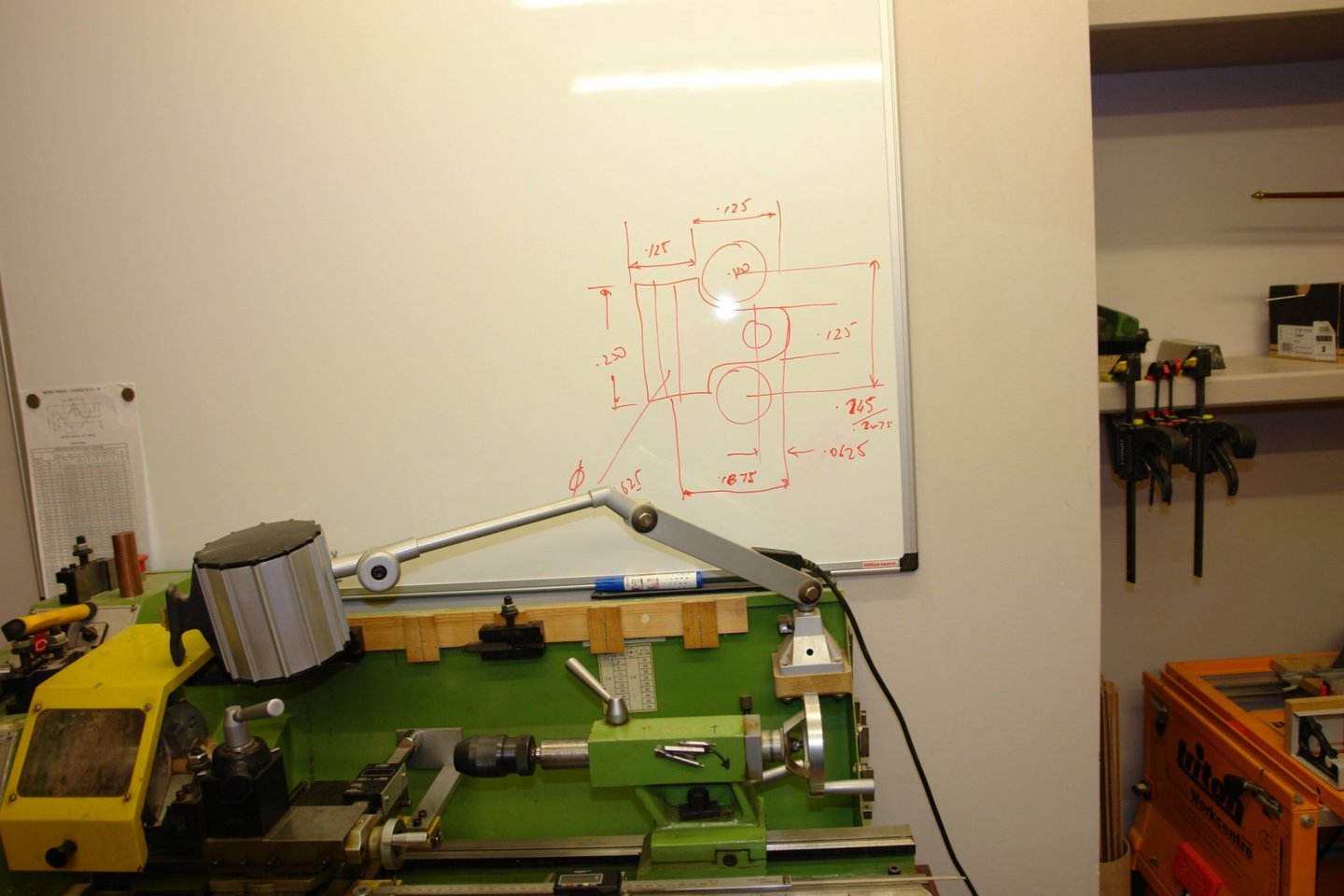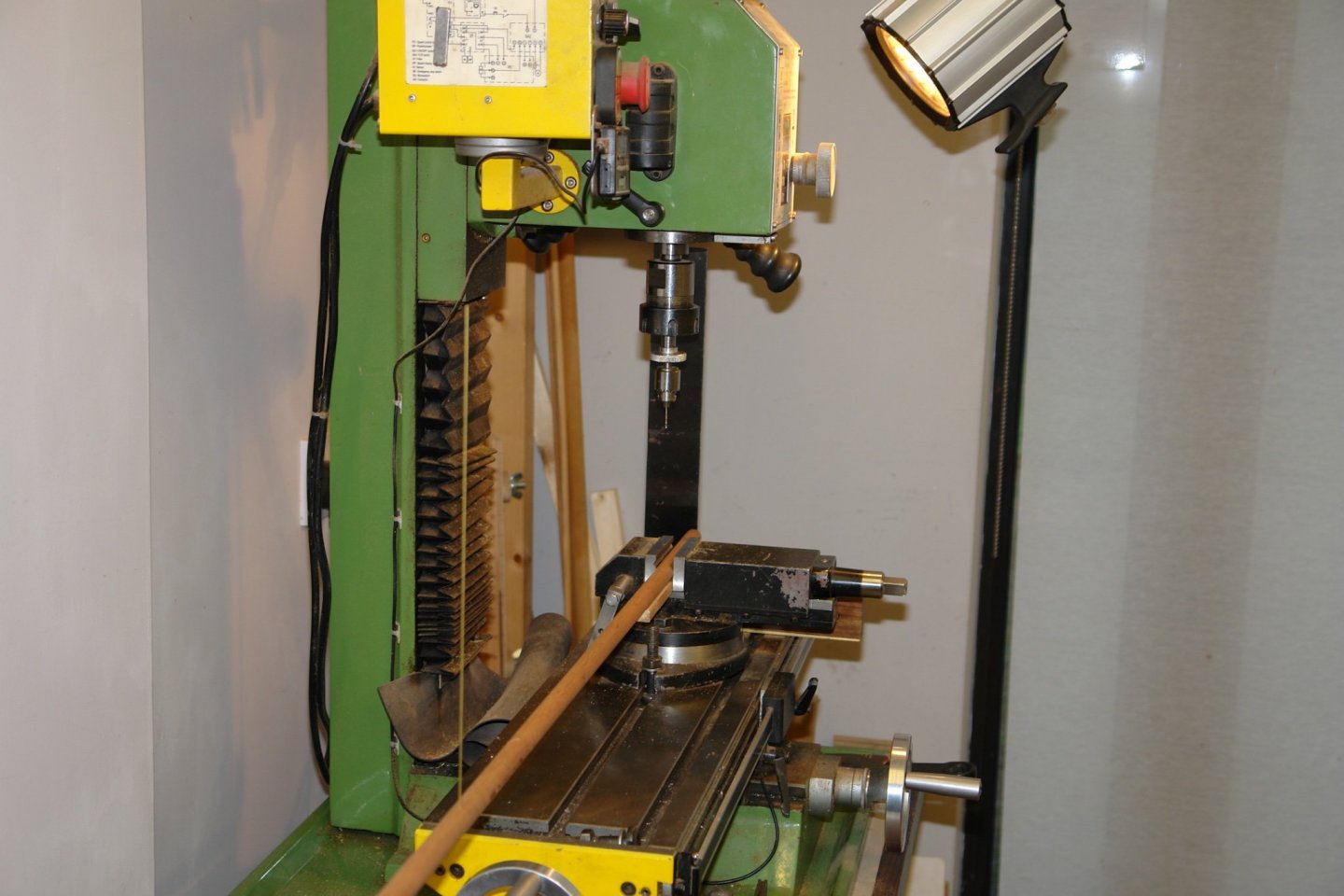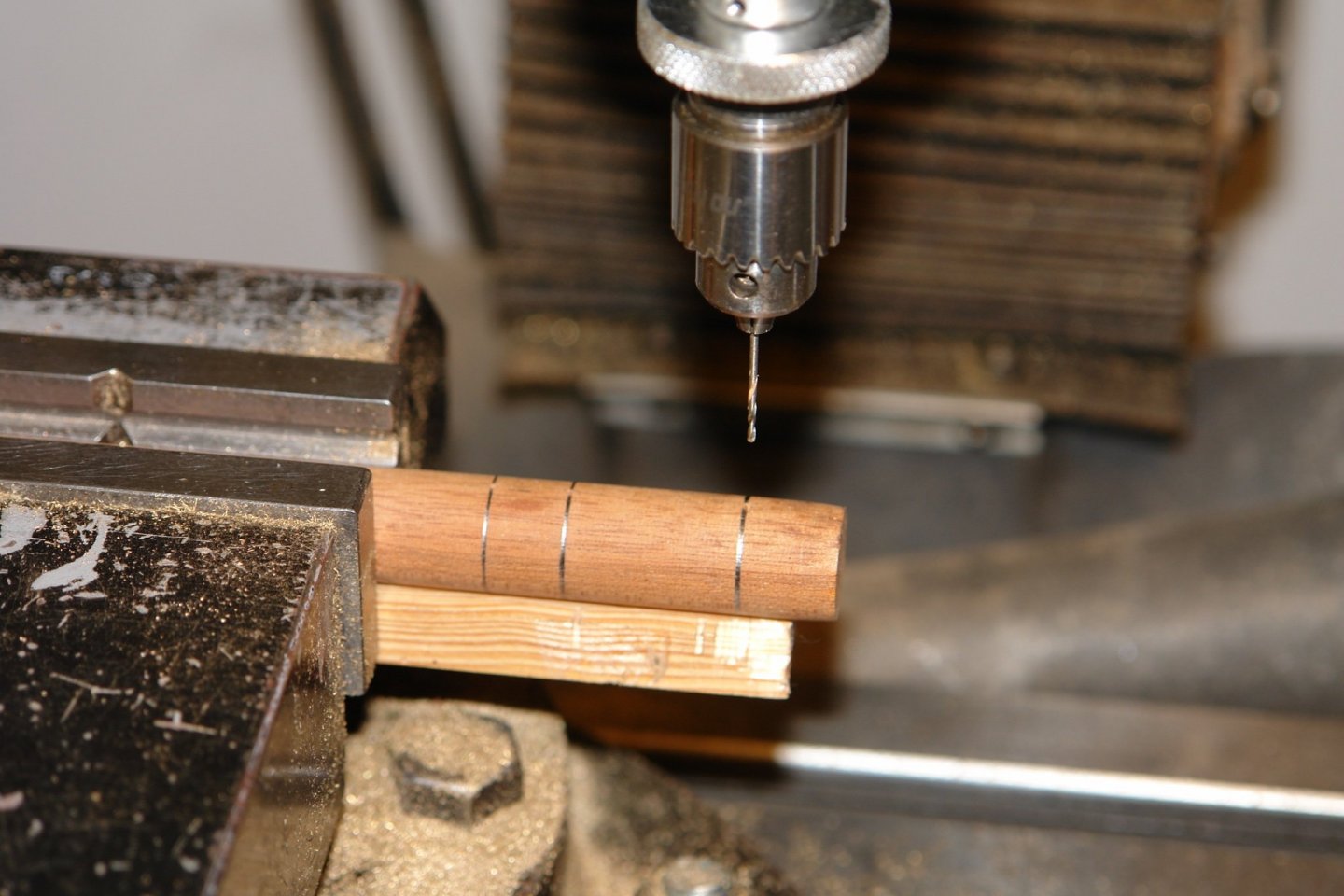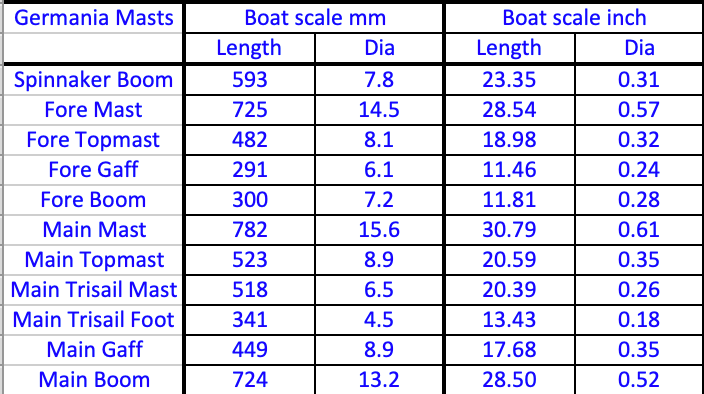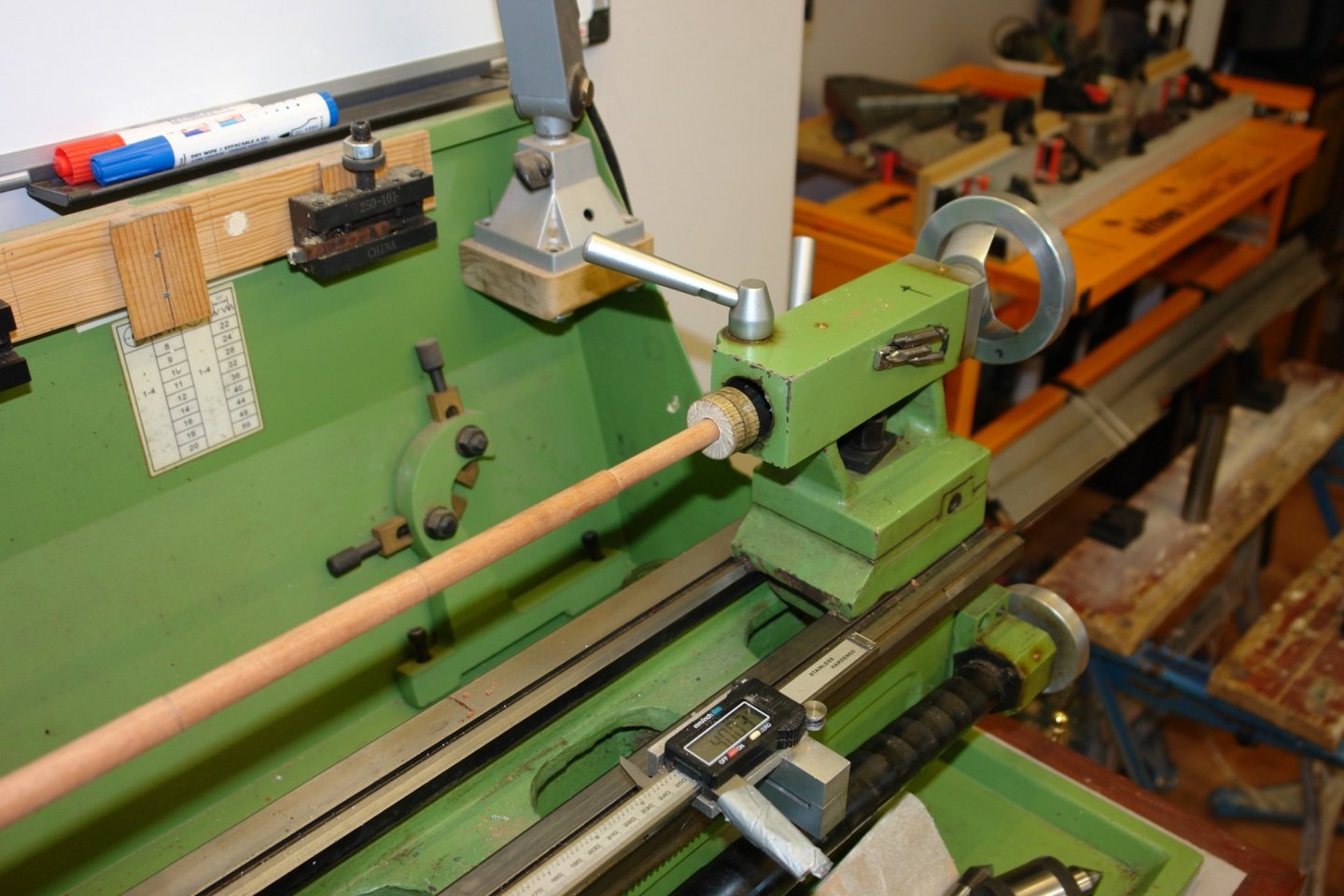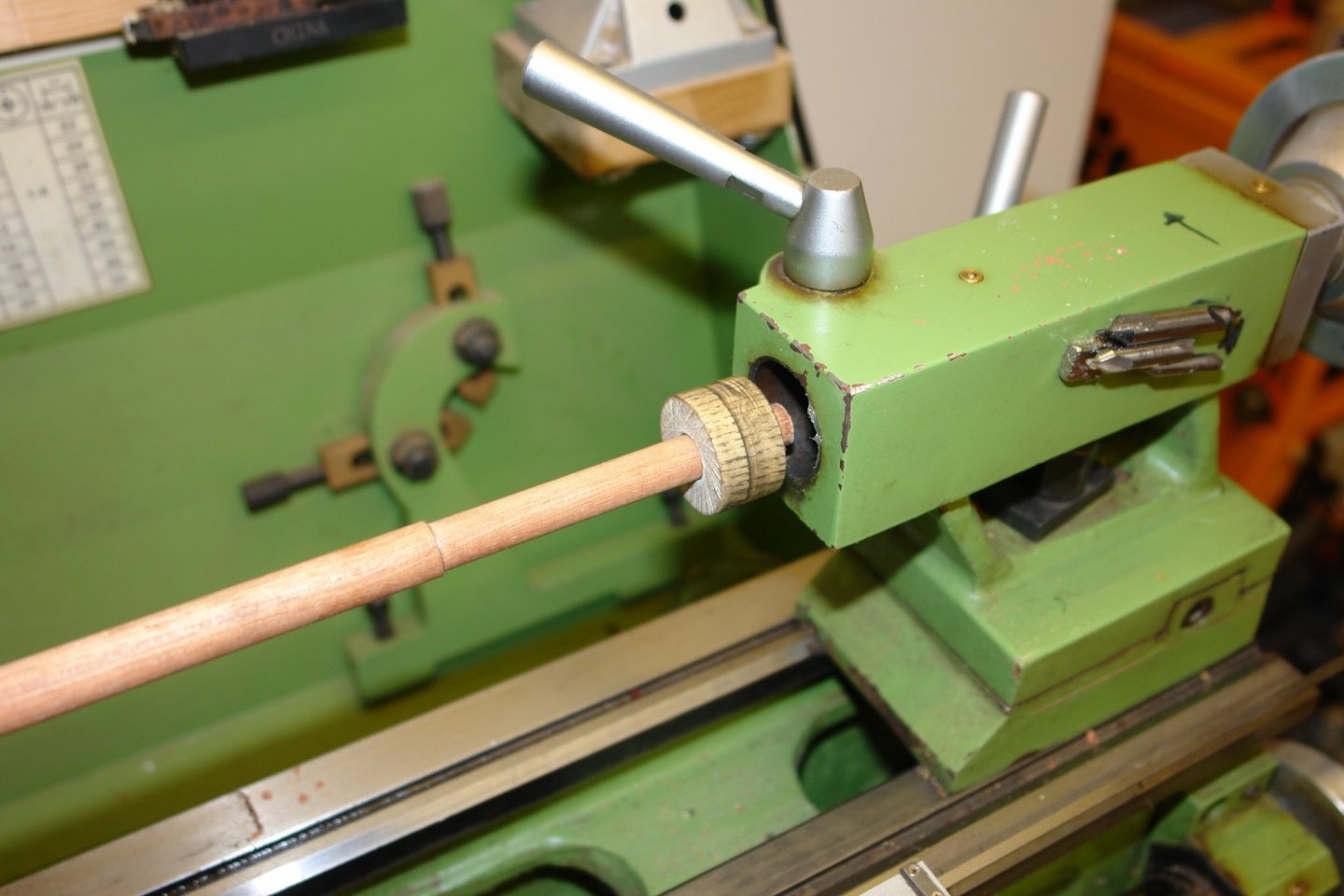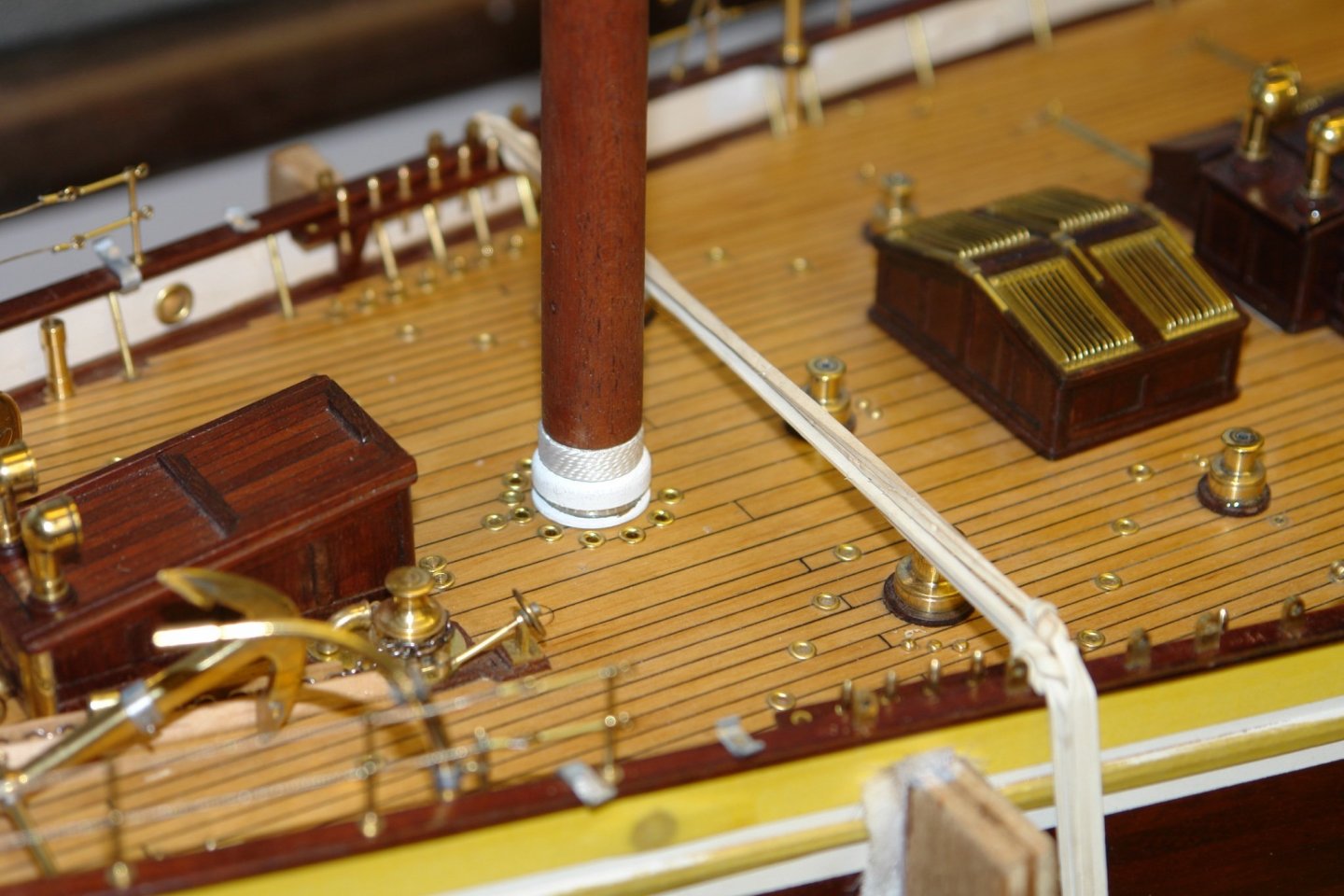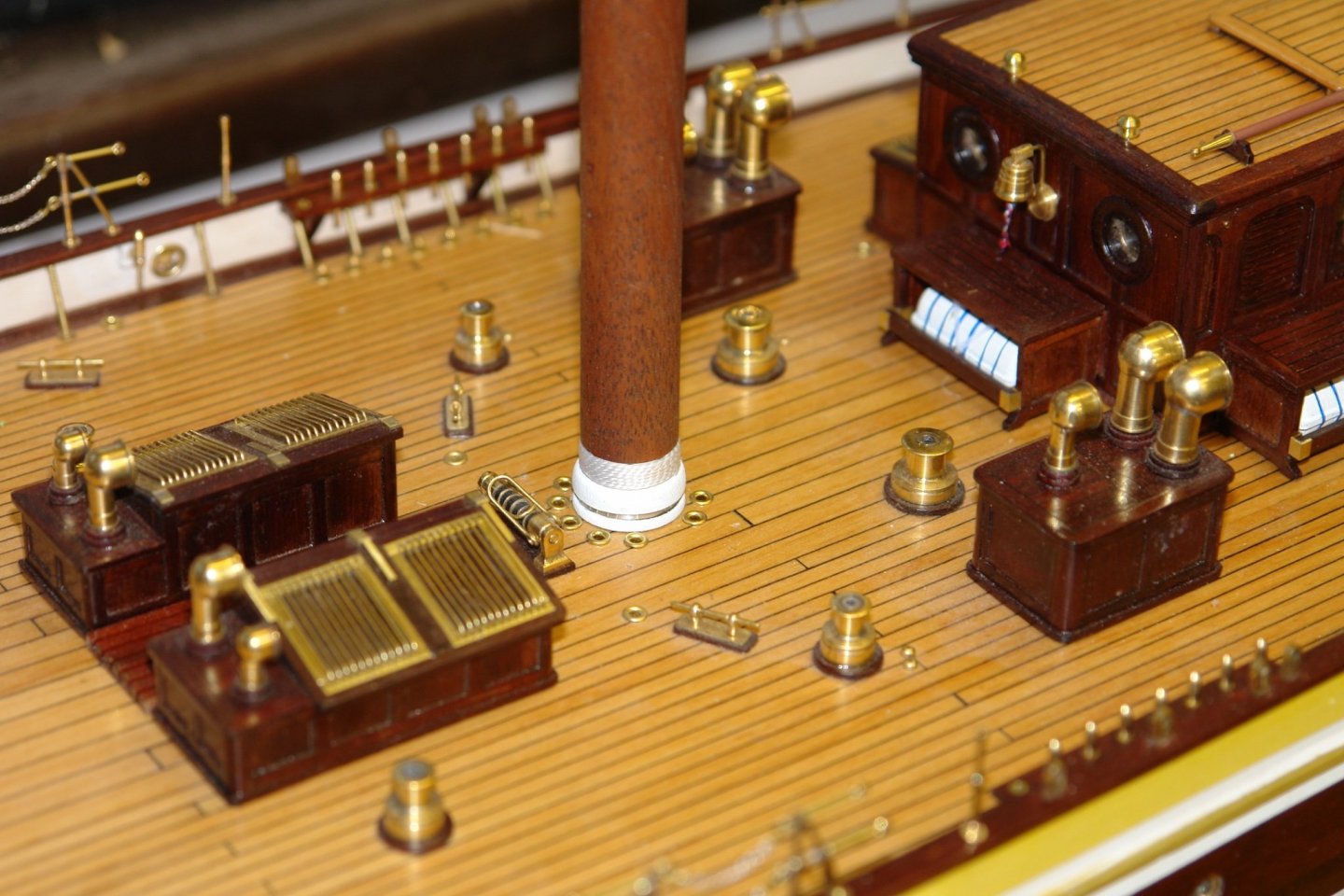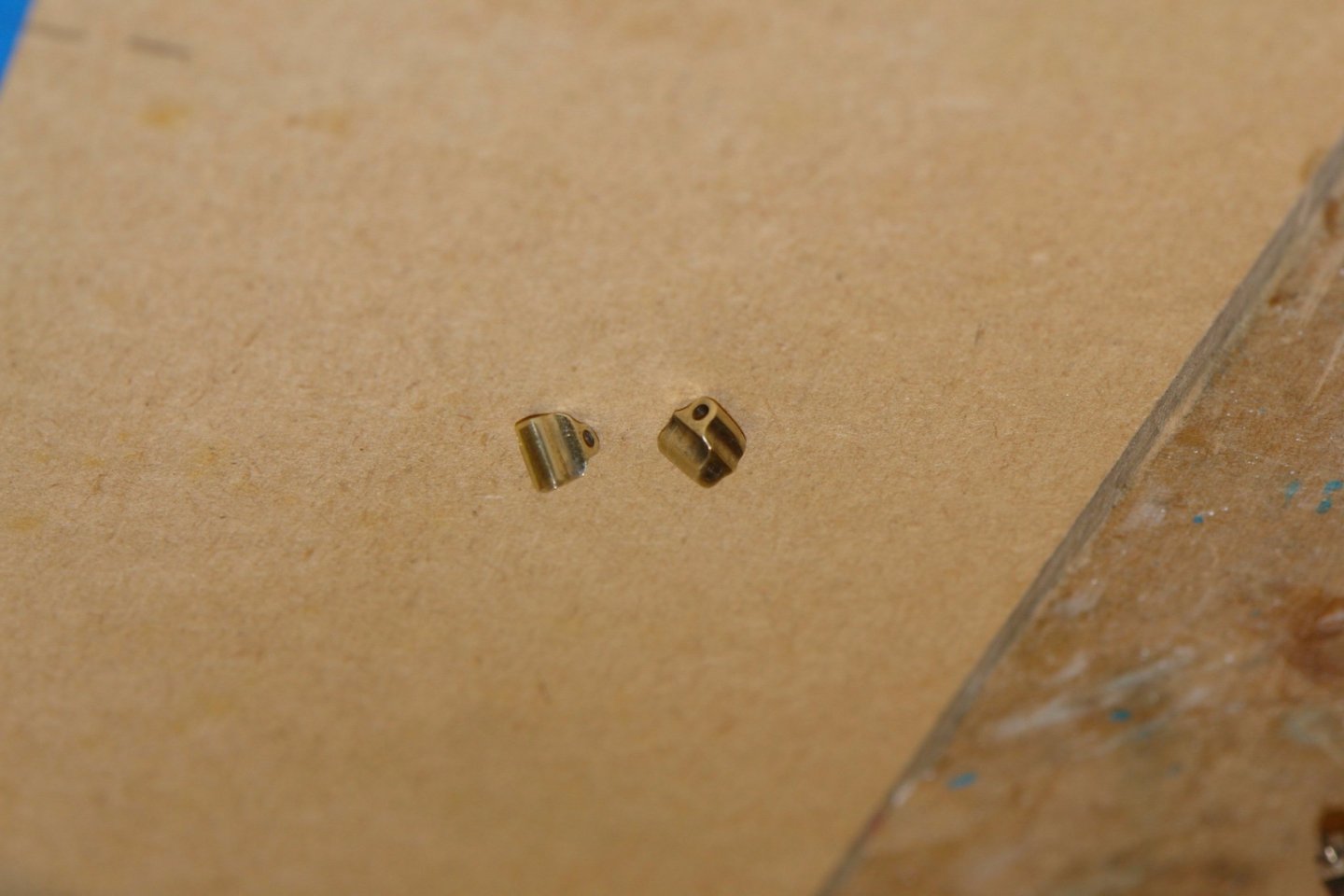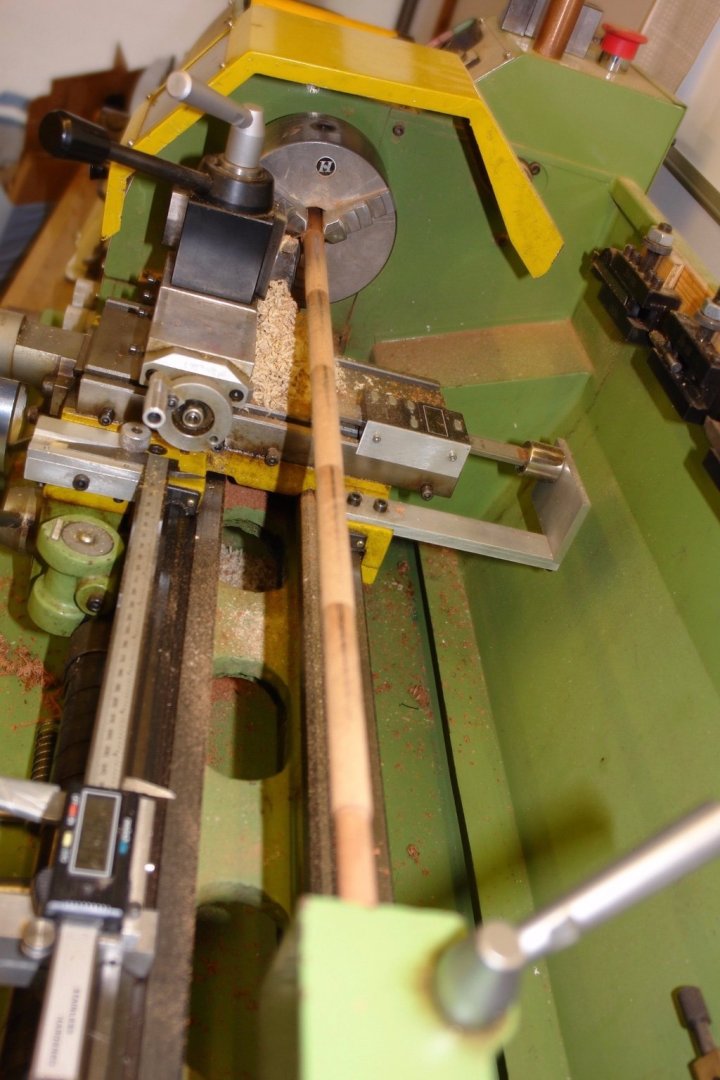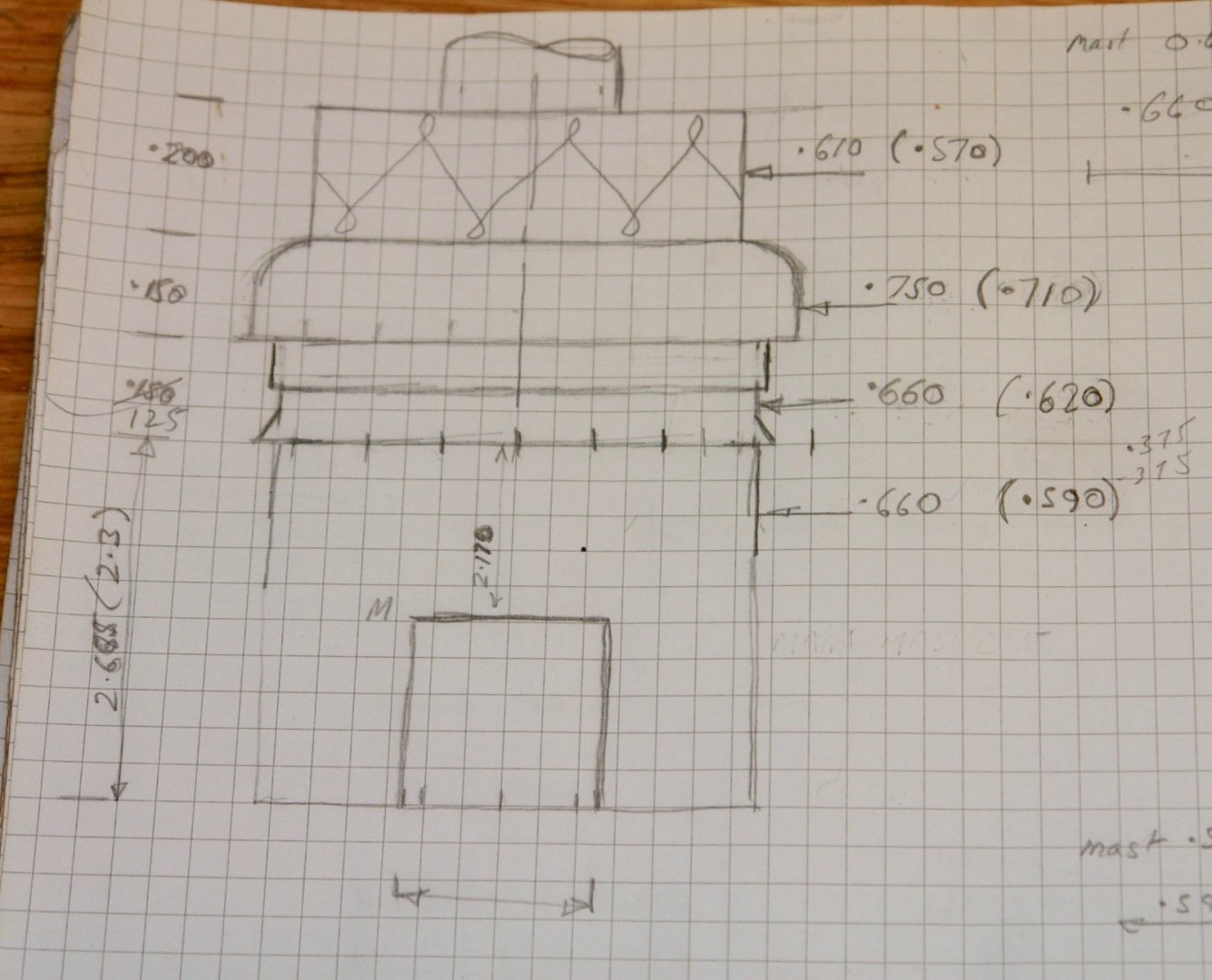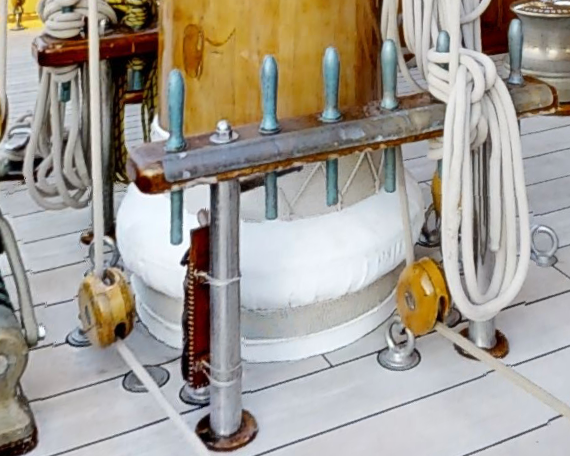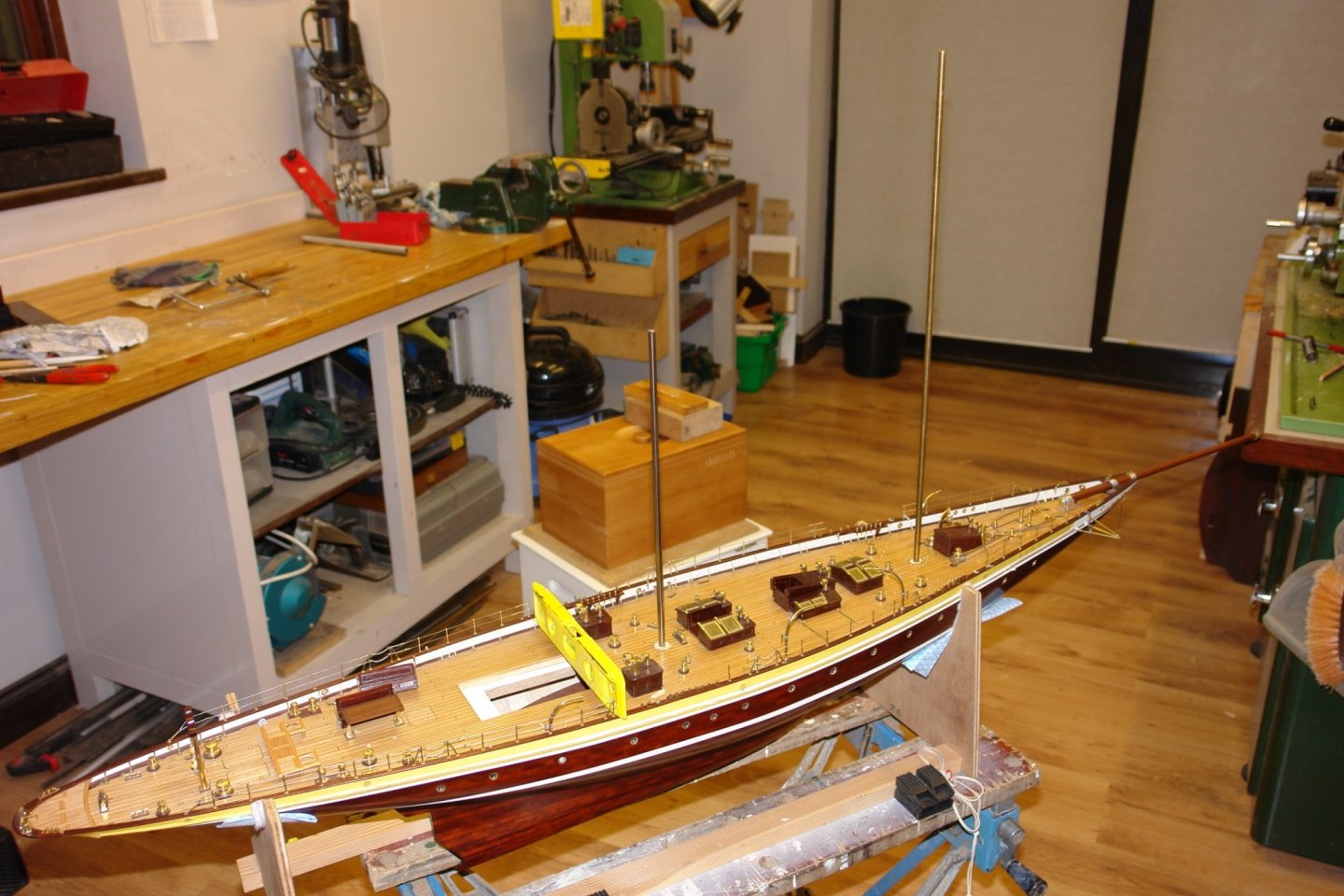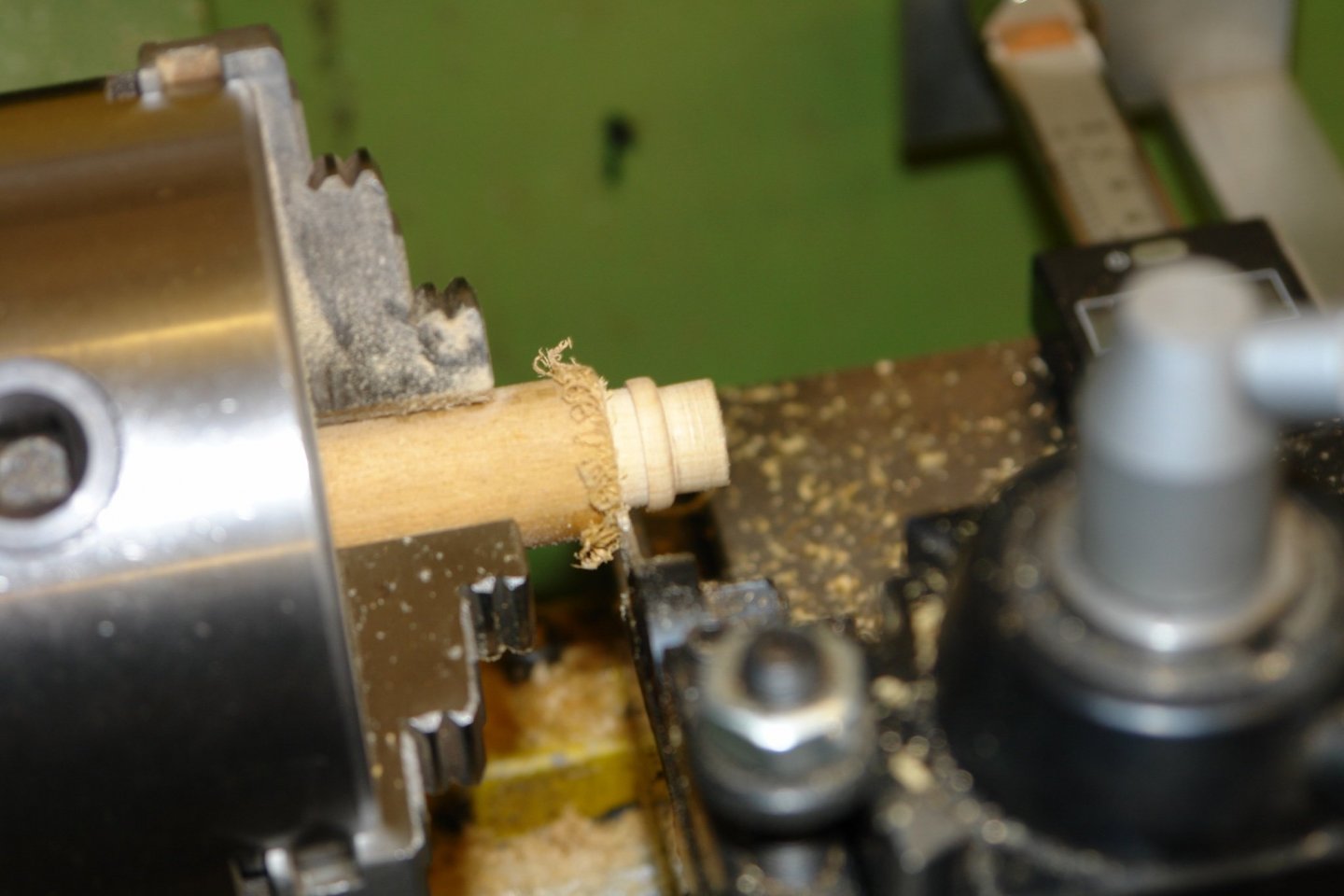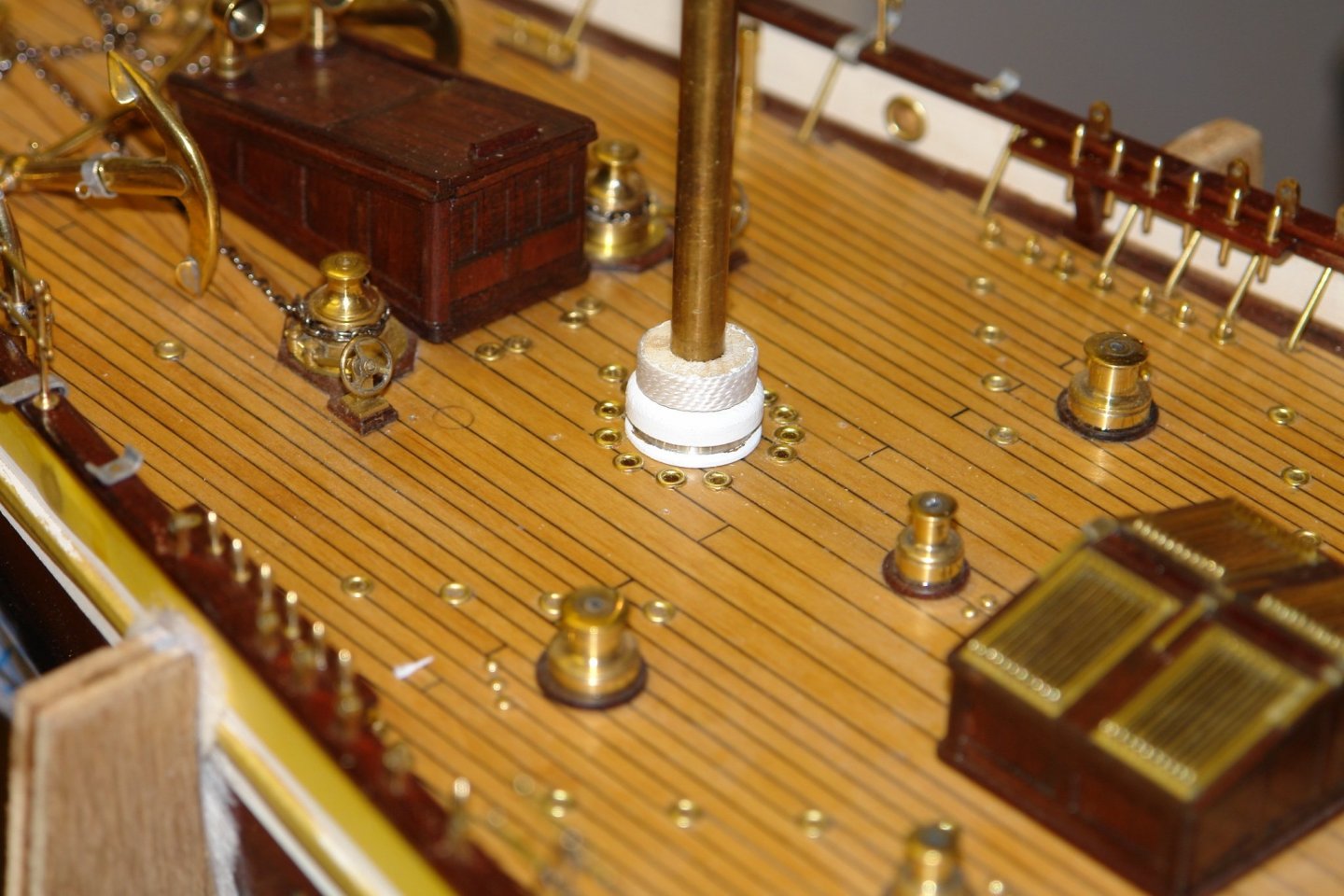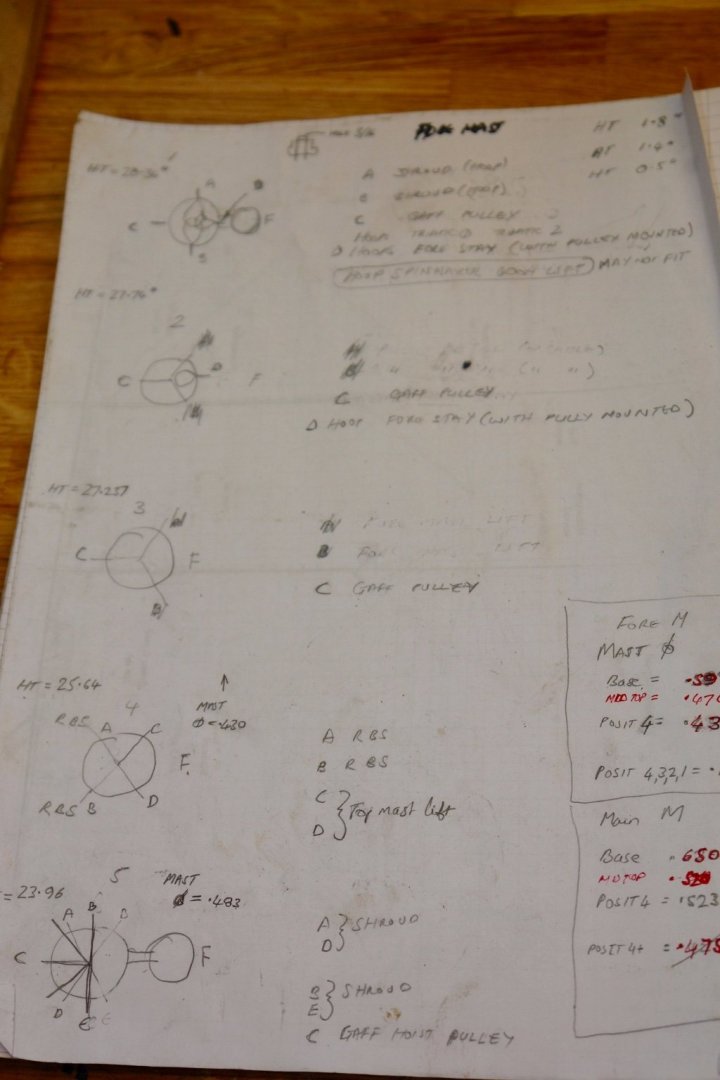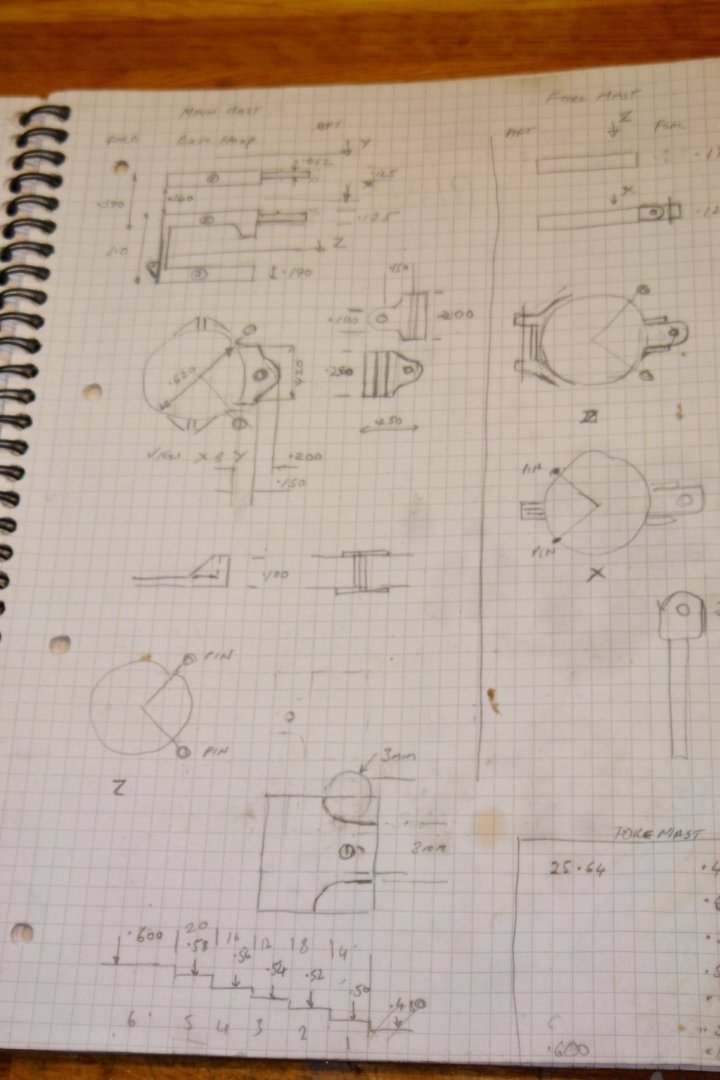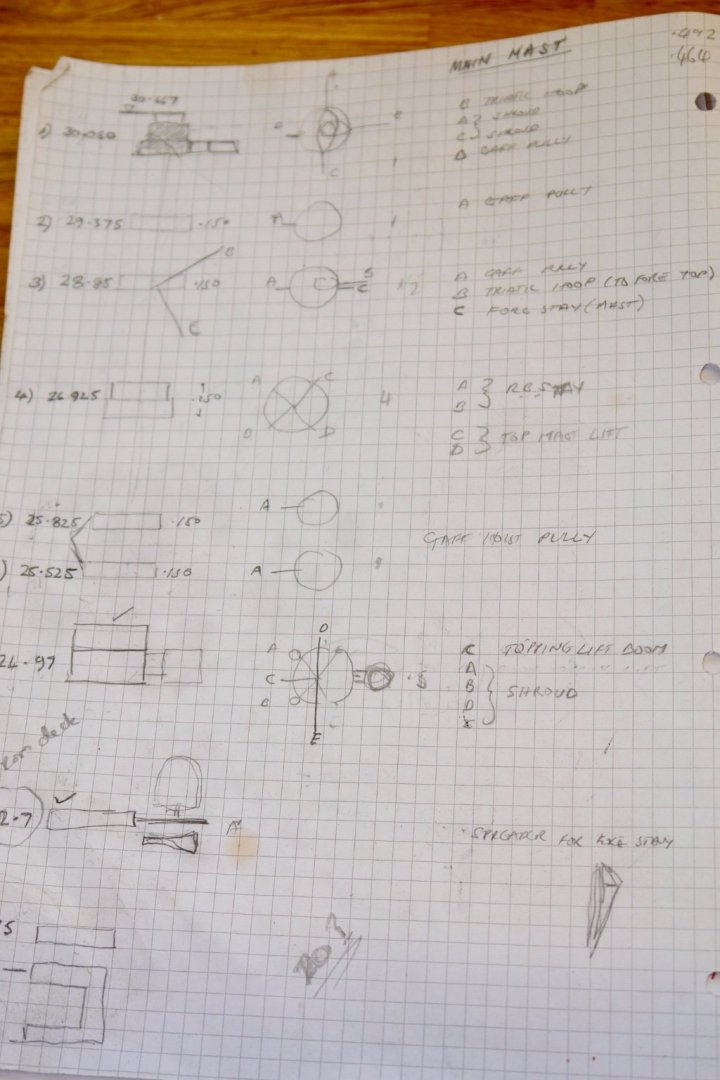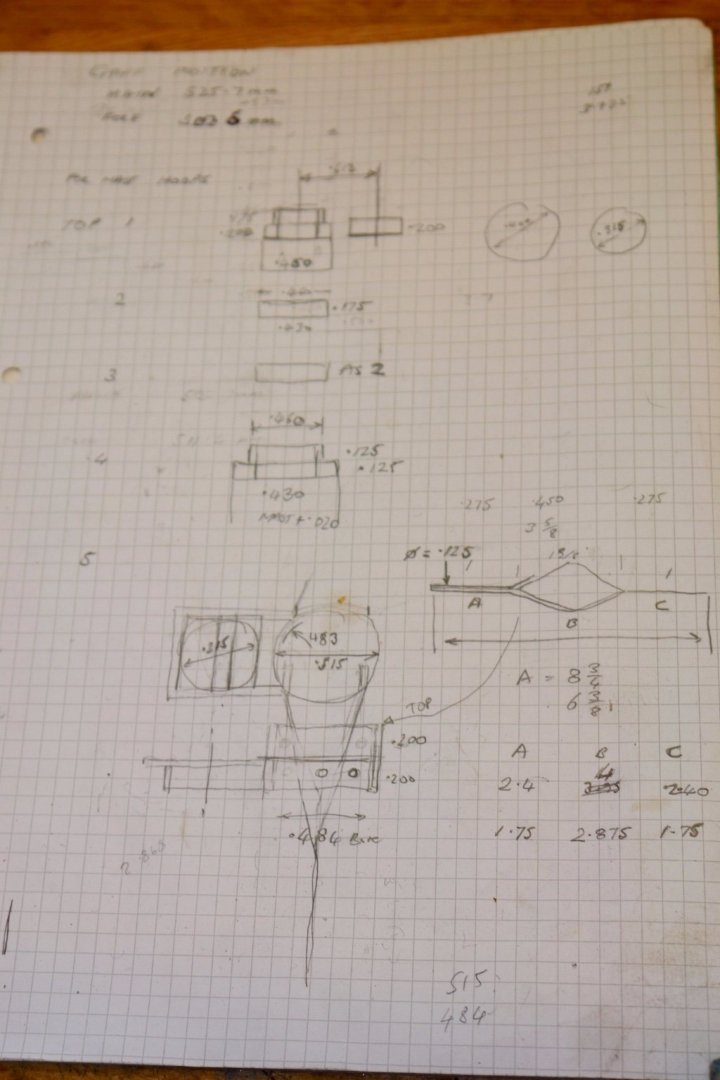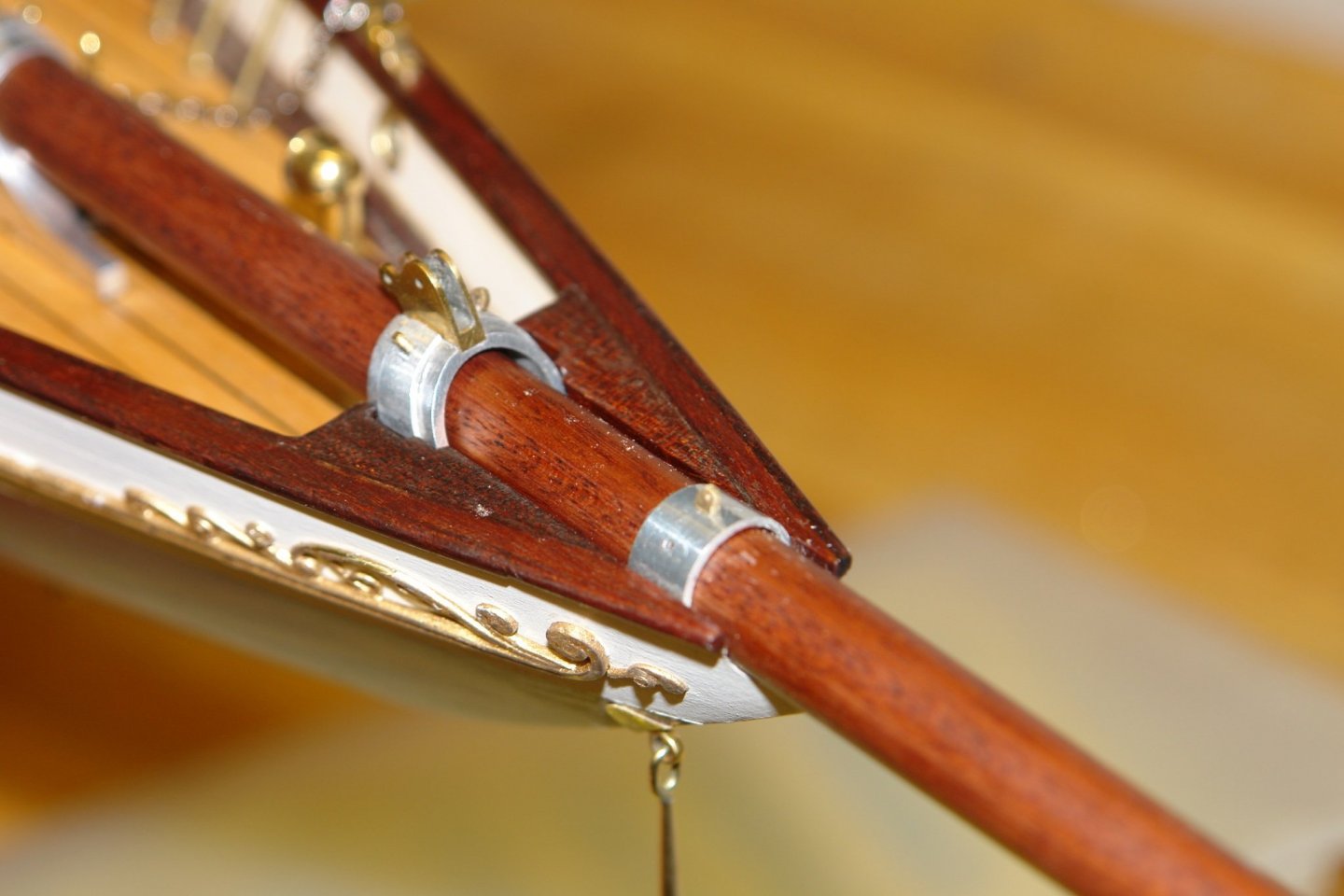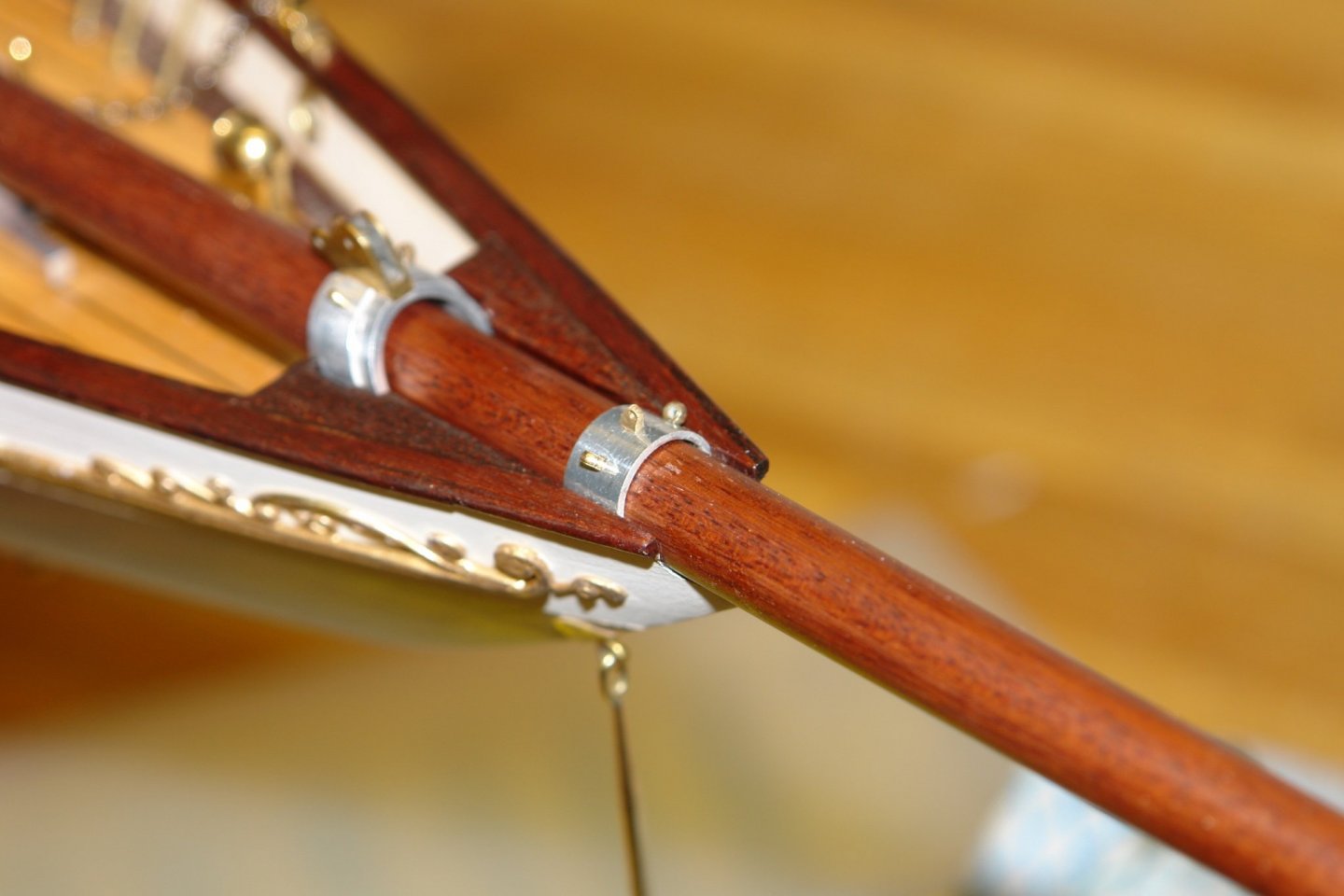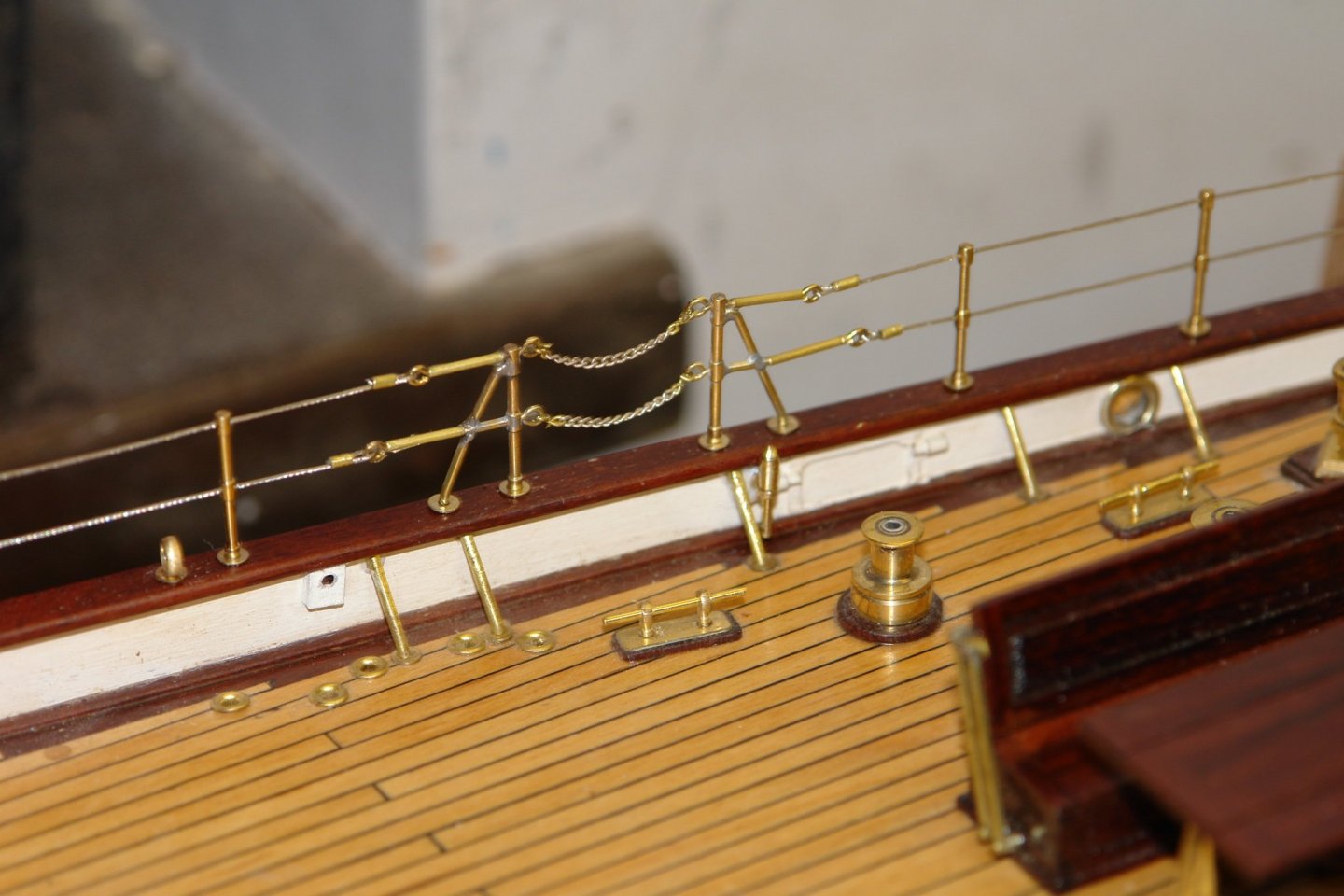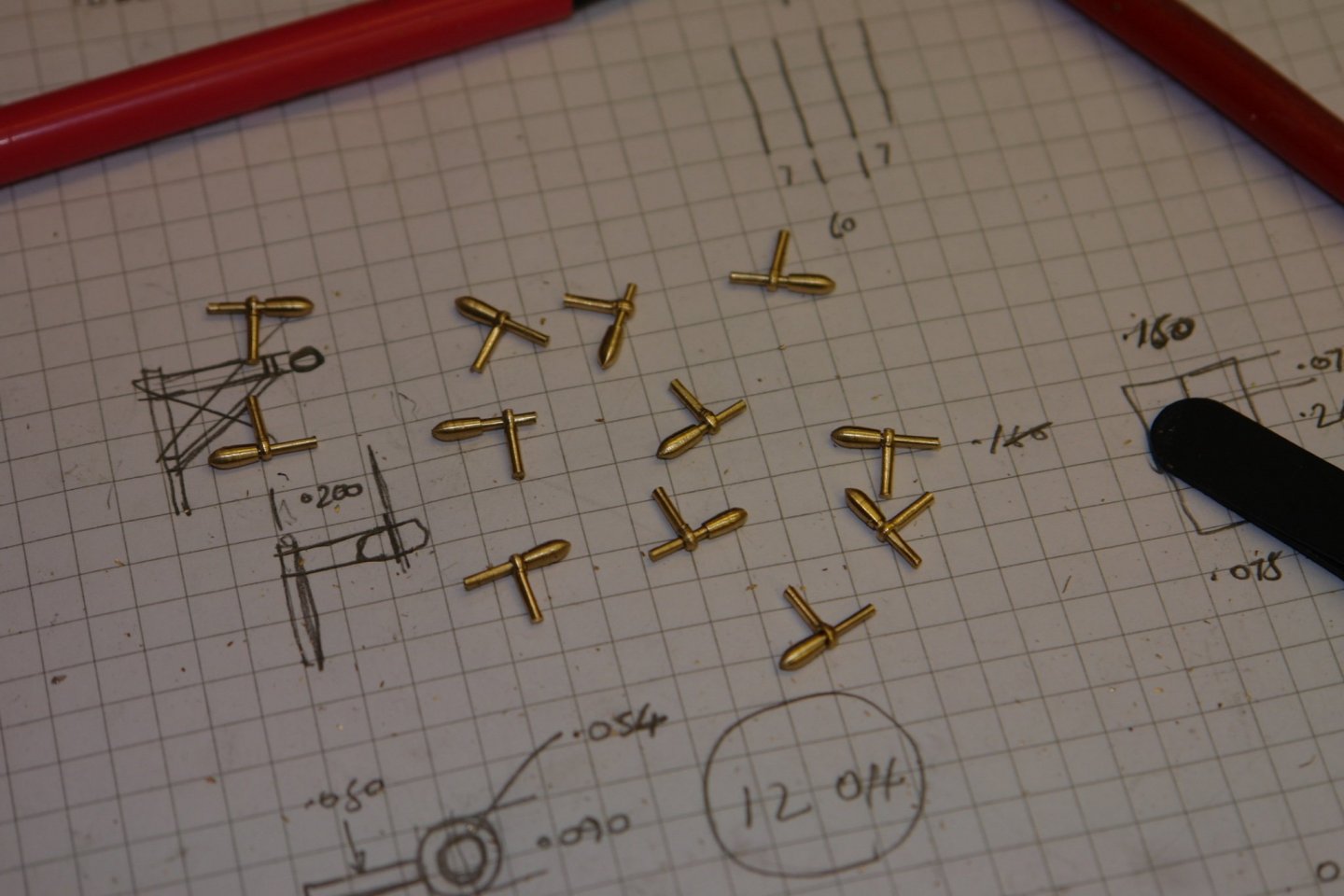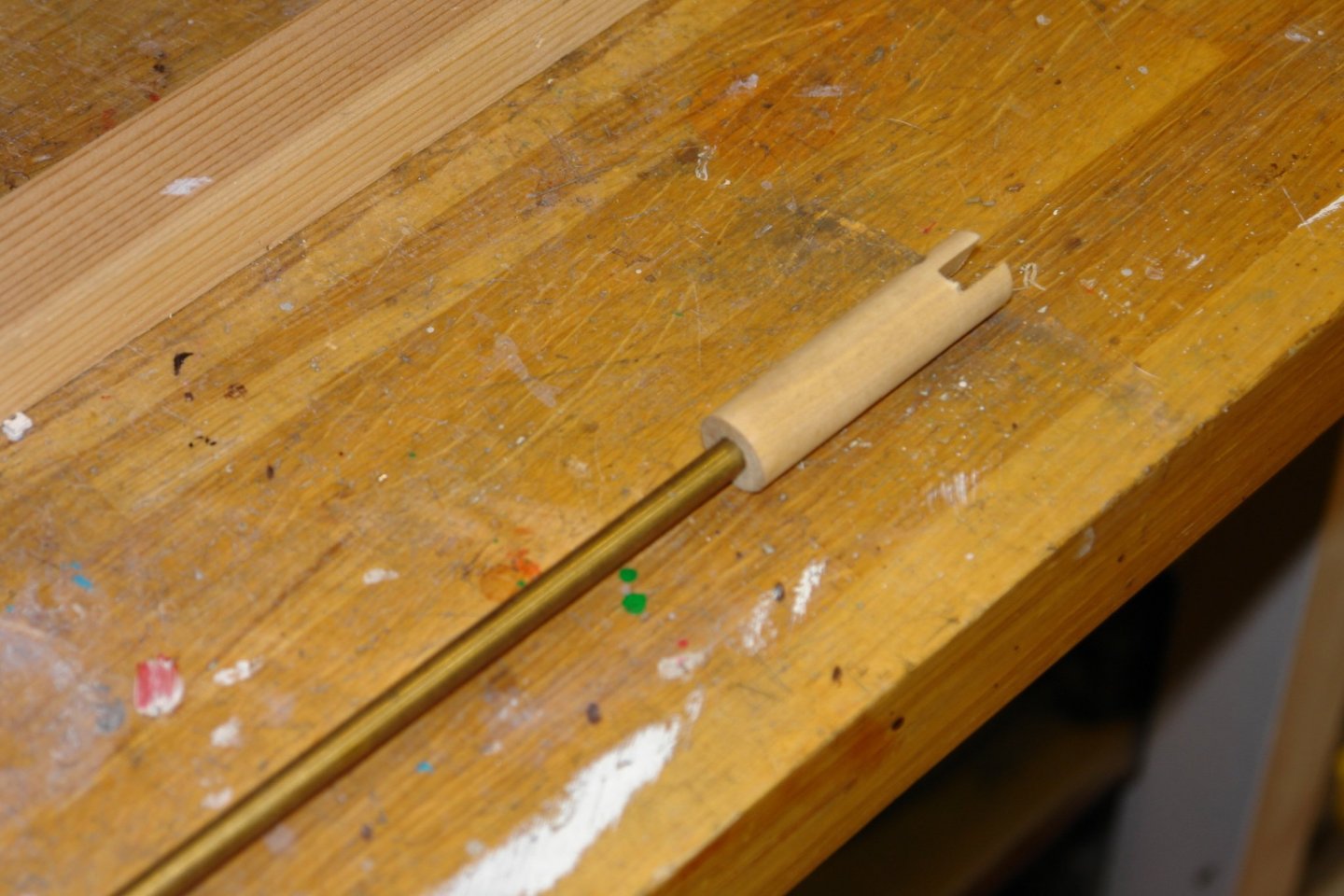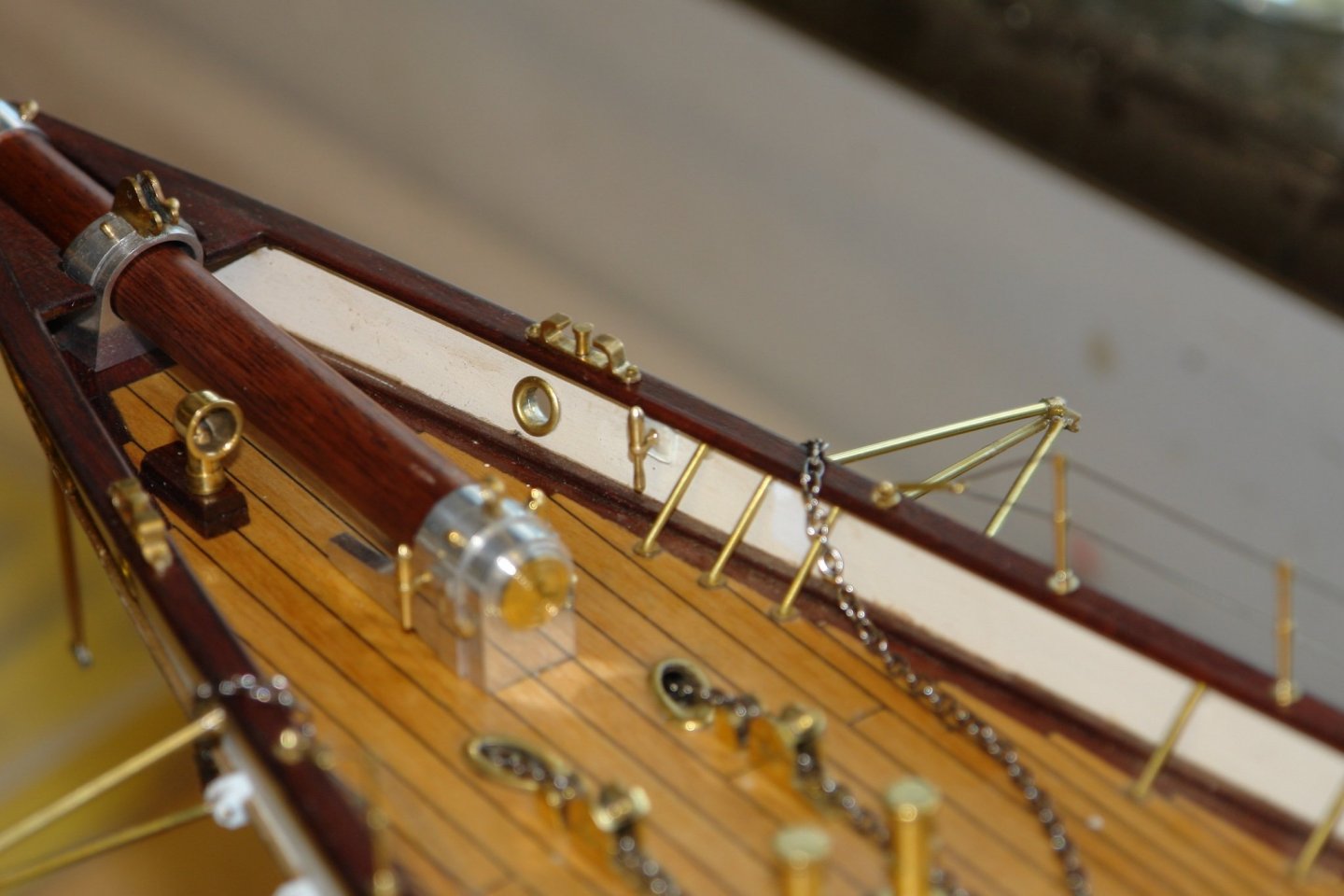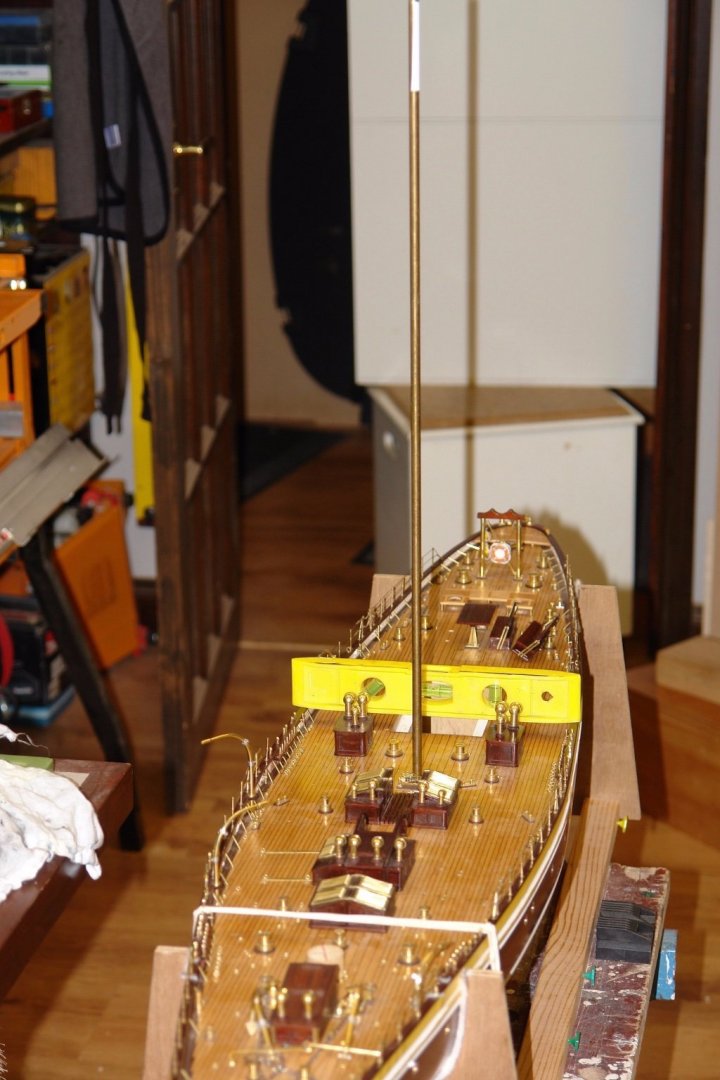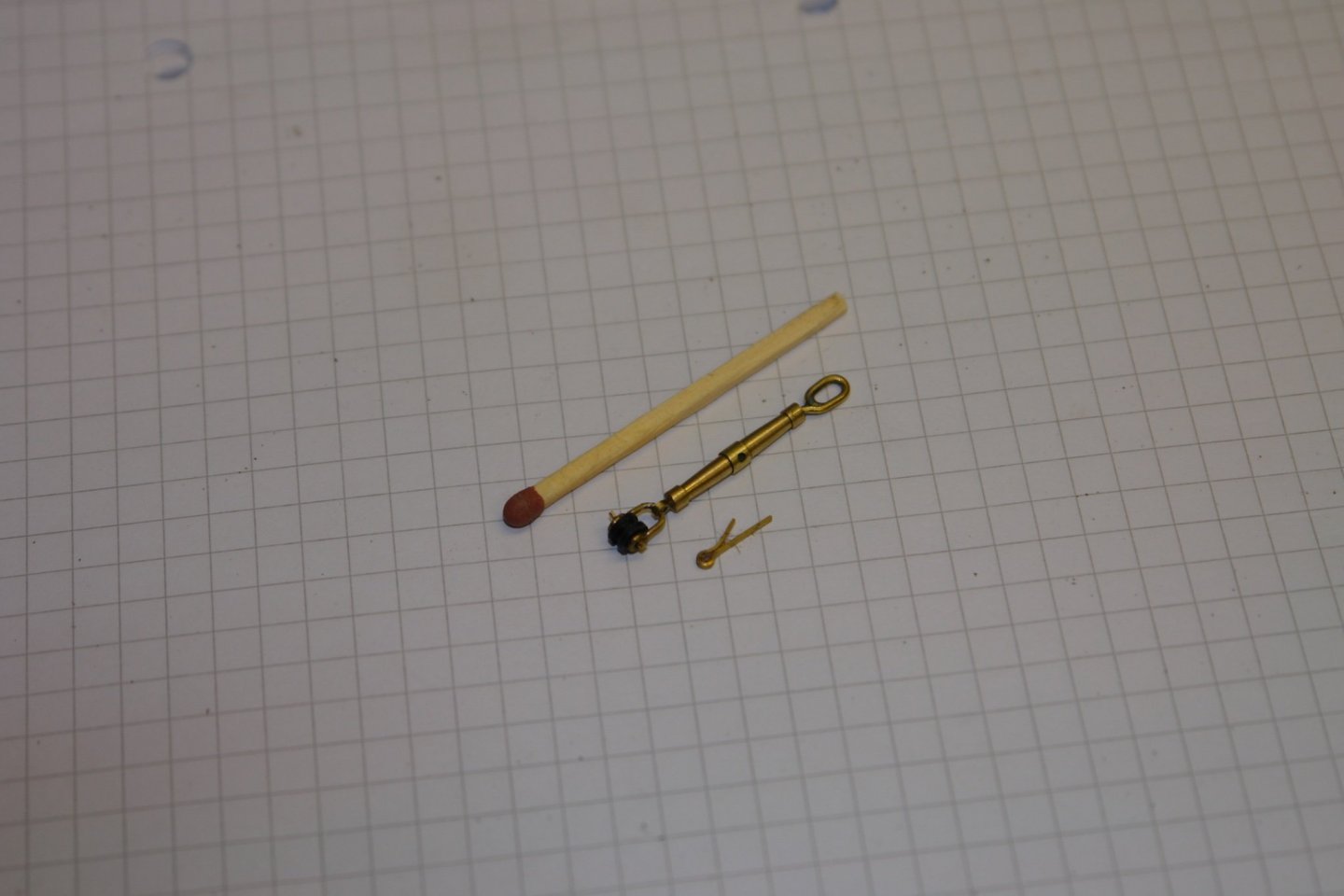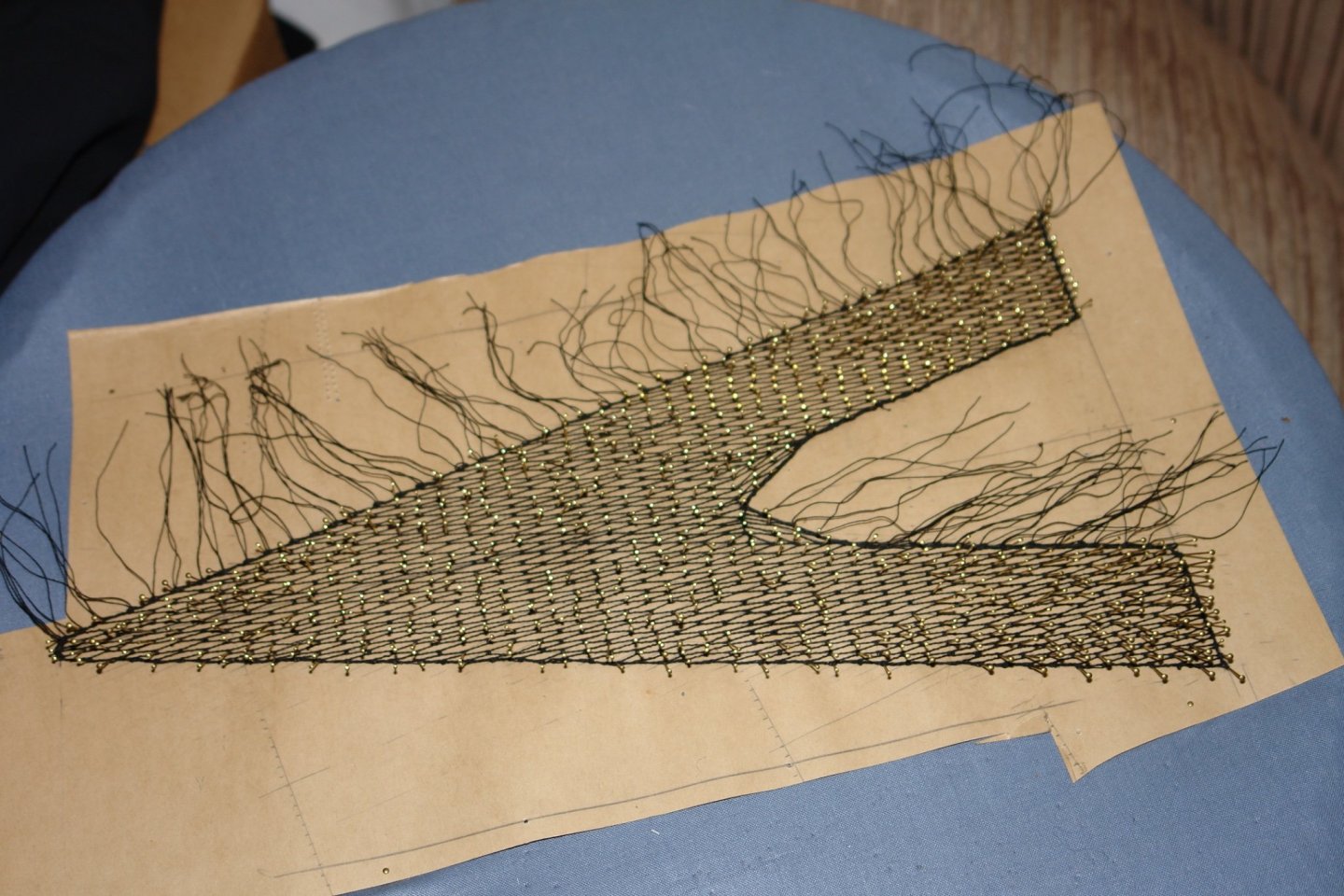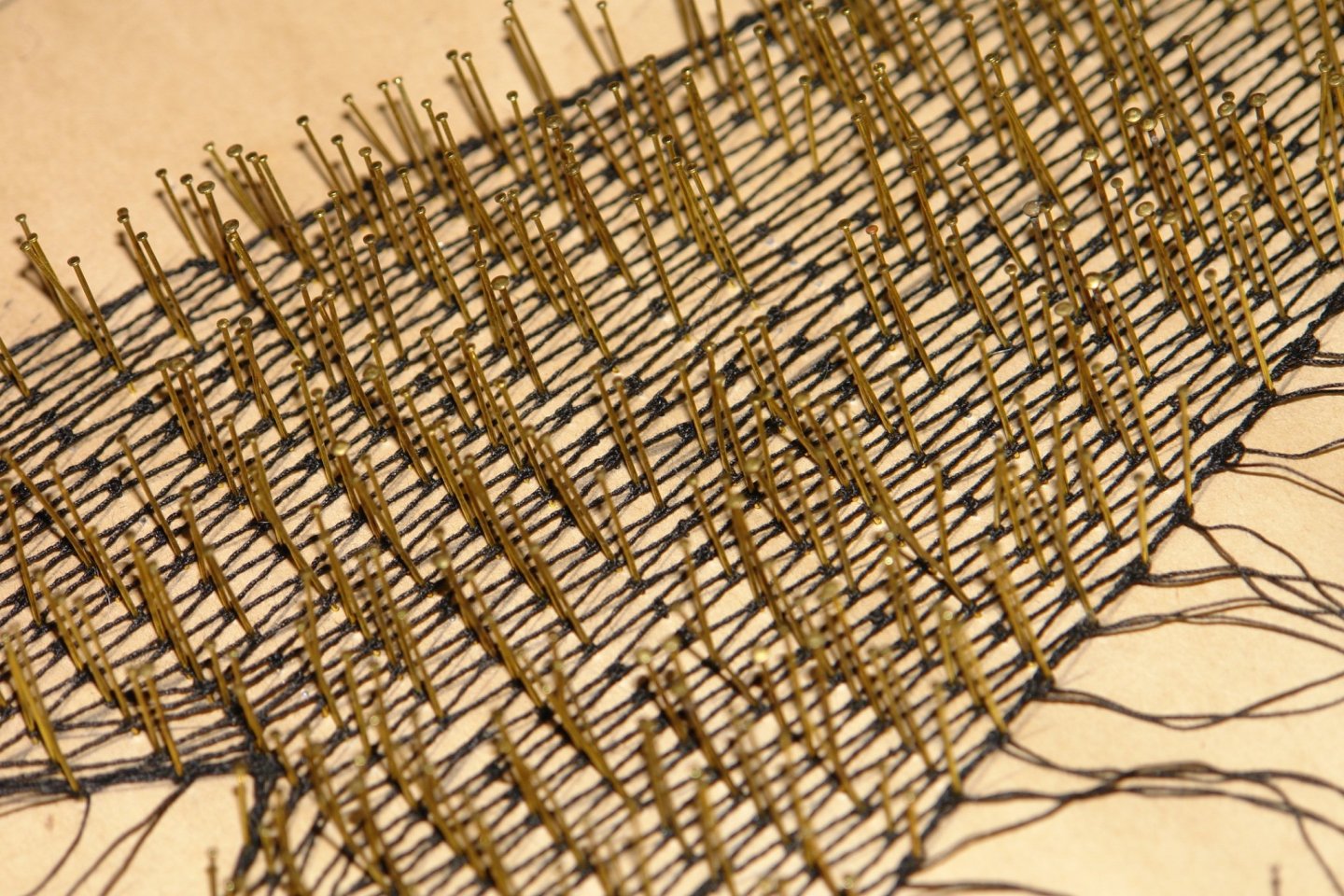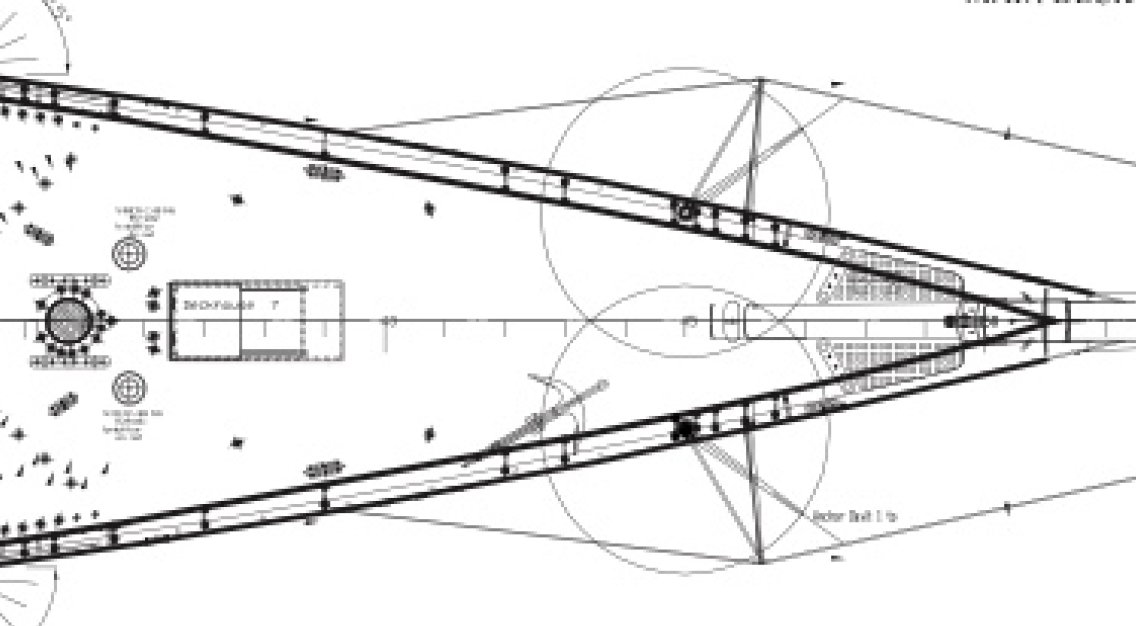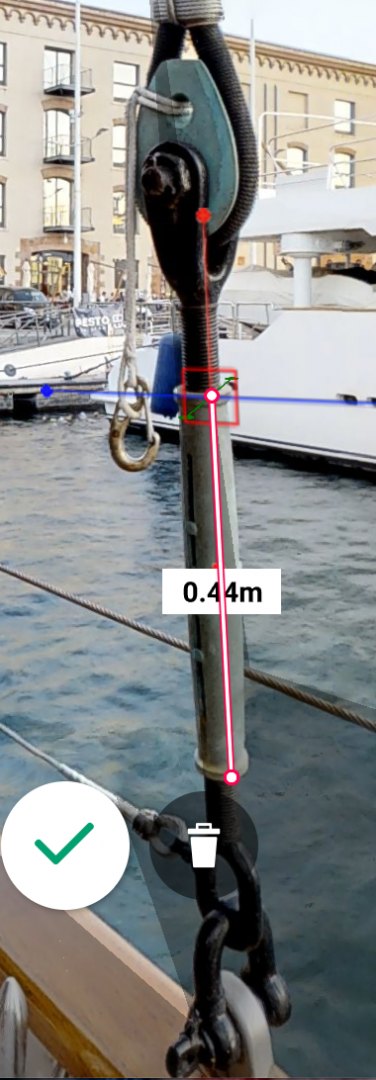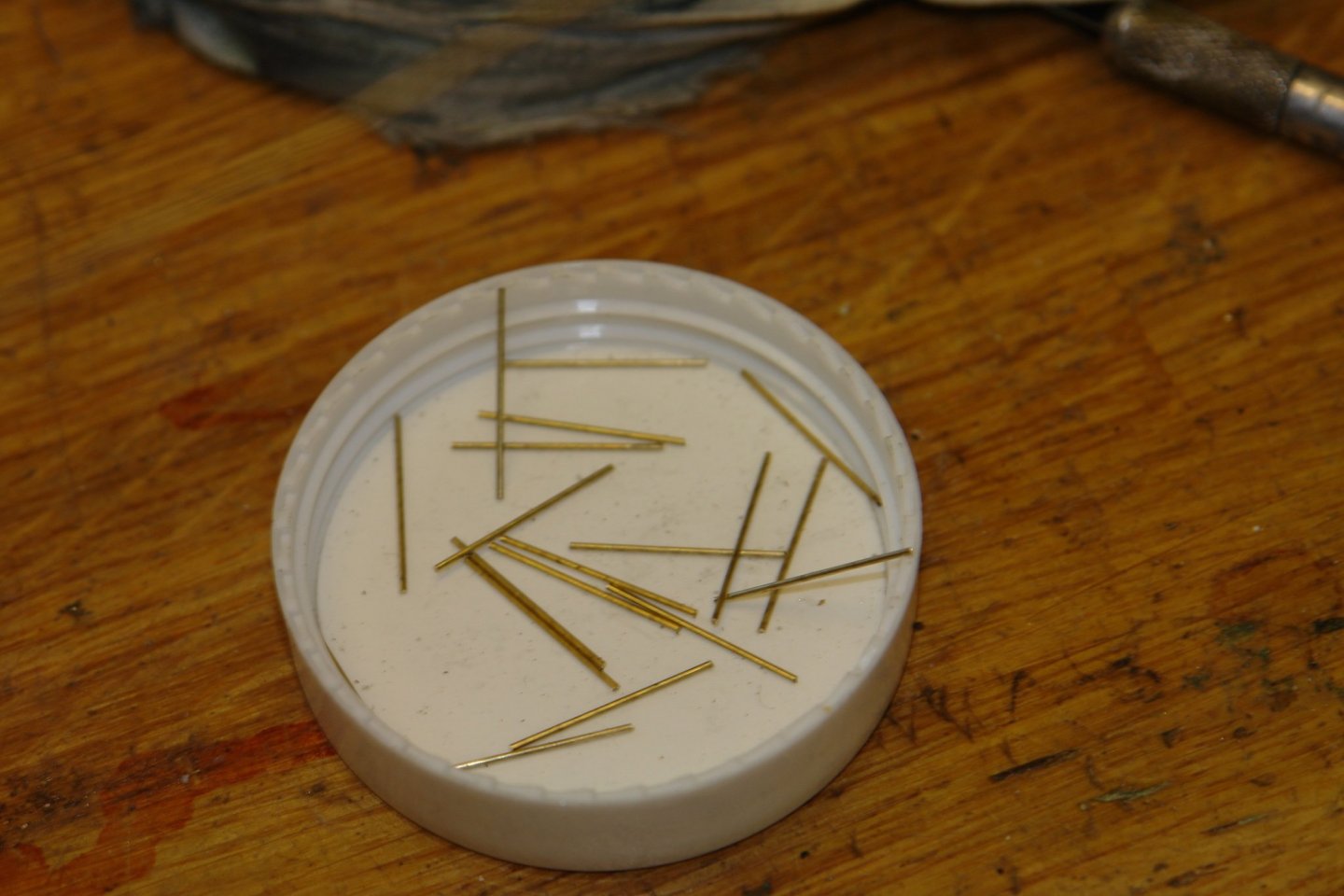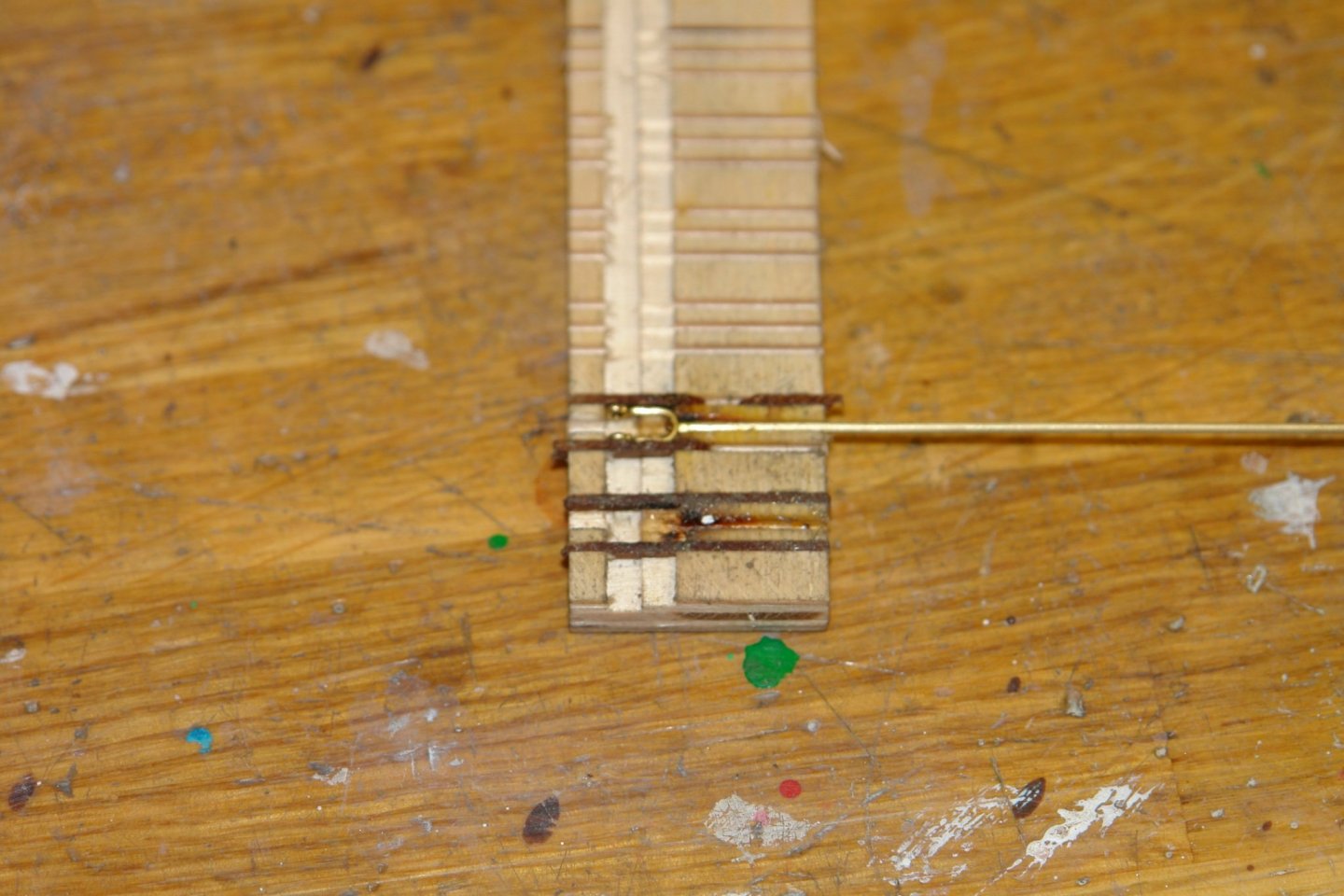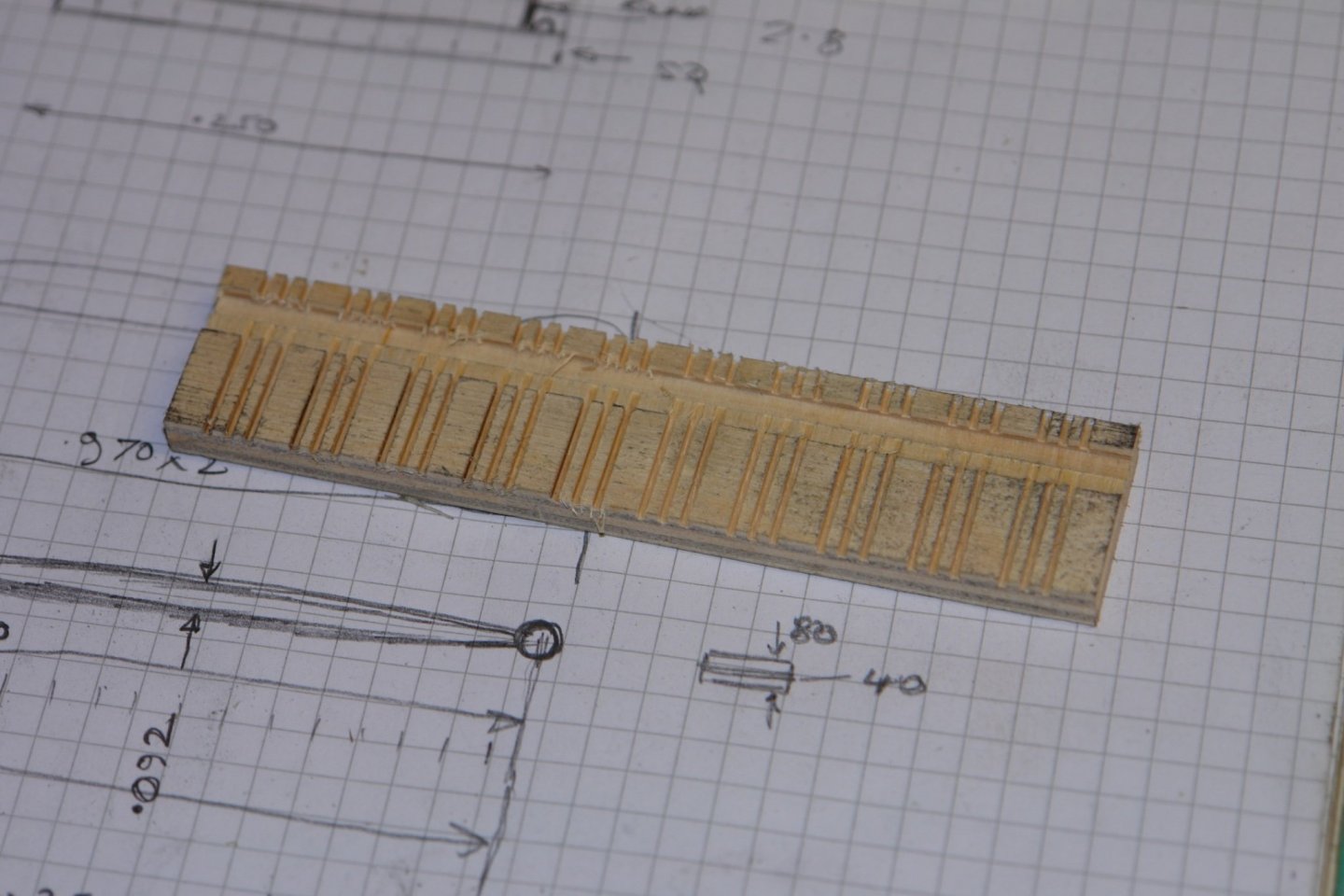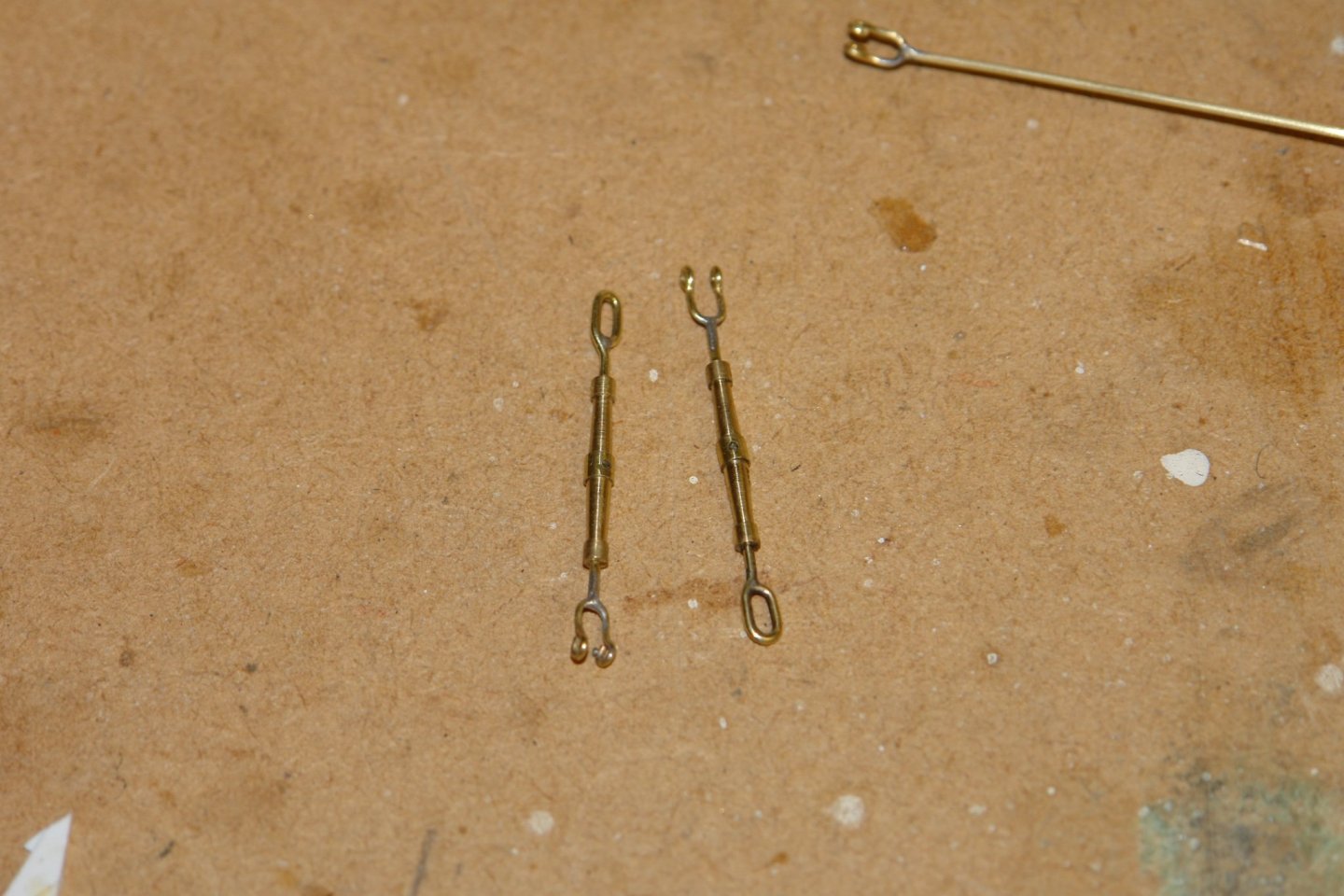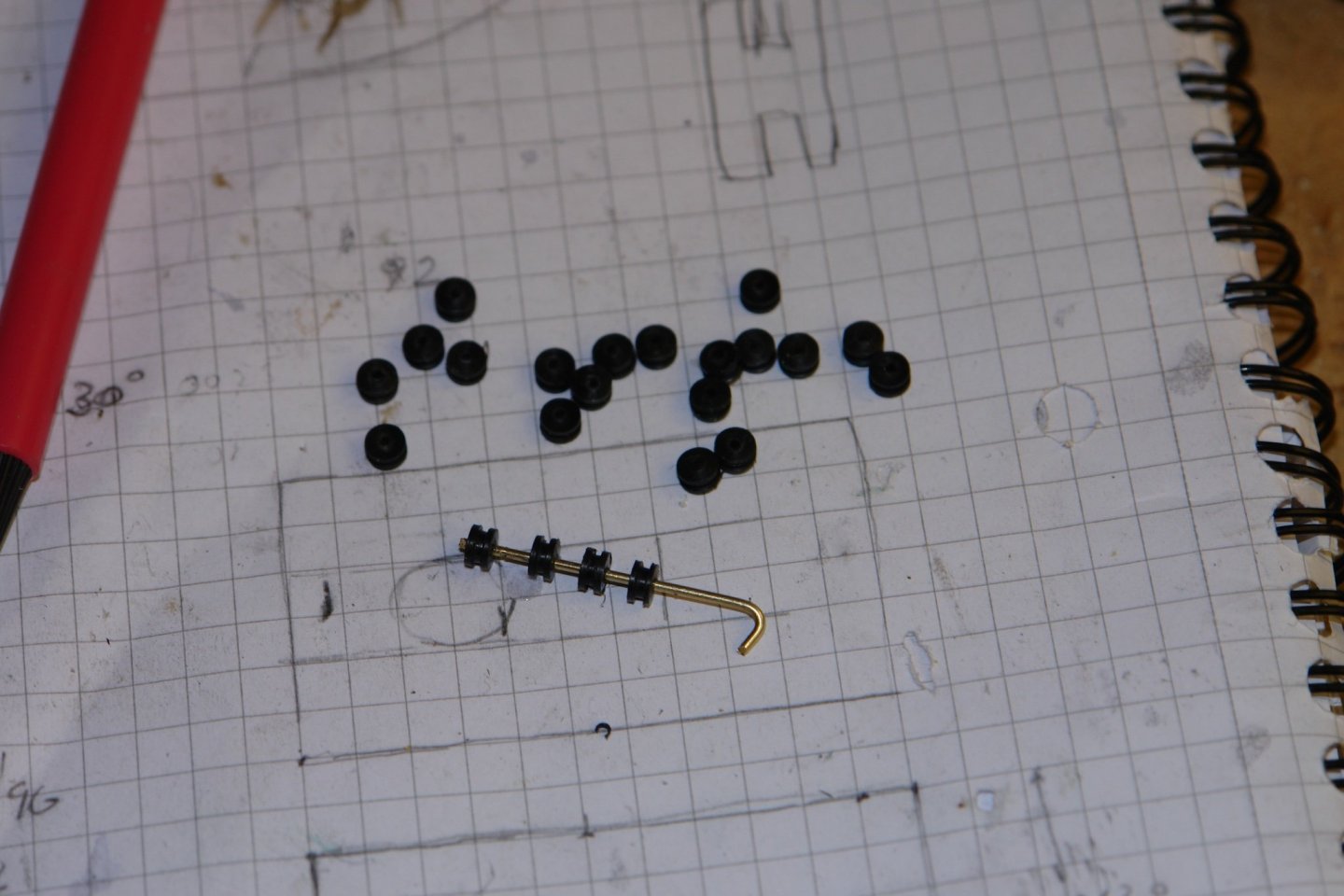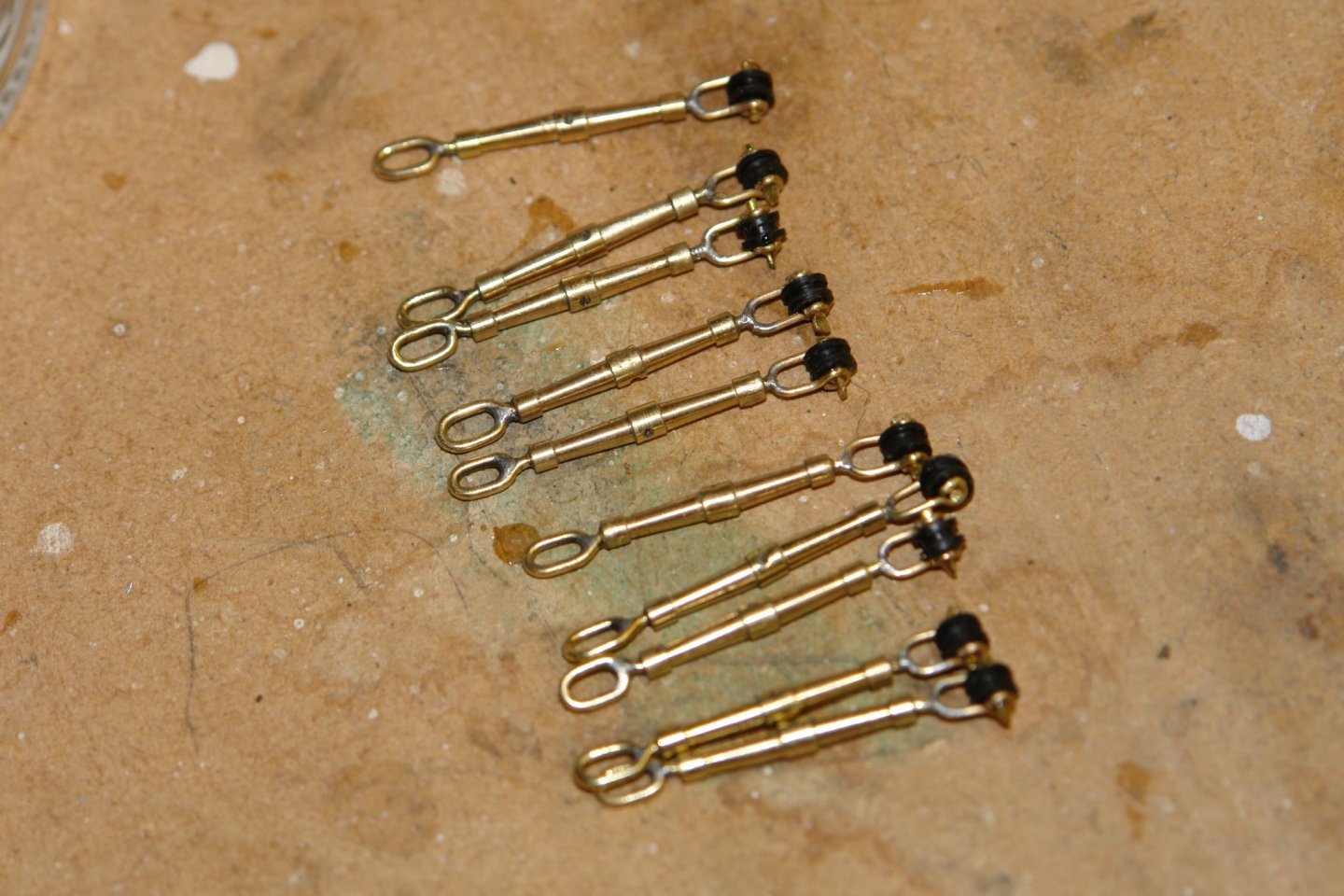-
Posts
3,946 -
Joined
-
Last visited
Content Type
Profiles
Forums
Gallery
Events
Everything posted by KeithAug
-
Hakan, Sailing is much better excuse for lack of progress than my excuse of household maintenance. She is a cute little tub and so nicely made. Good luck with the treatment and get well soon.
-
lovely paint job Eberhard. You seem to have made rapid progress of late, is it the sprint to the finish?
-
Druxey, Pat, Gary - thank you all for your comments. Last week I made the hinges for the goosenecks. I did the sketch on the whiteboard (a handy addition to the workshop). . Complicated little pieces to make, they were milled from .250" square brass bar using the sides and face of a .125 diameter end mill. The through holes are .062" diameter. The outside curves were filed using filing buttons. I then moved on to making a start on the masts. I have sized all the masts and spars, 11 in all excluding the bowsprit which is already made and fitted. The fore and main mast were made from mahogany dowel. Having cut 2 lengths for the main and fore masts i marked the positions for all the mast hoops. I then drilled each position with a through hole of .040"diameter so that the position wasn't lost during further machining operations. I calculated a series of cylinders to give me the correct taper and then machined the cylinders on to the mahogany dowel, The mast lengths are longer than I can cope with on my lathe so I took the tailstock apart and used an oak bush in the bore as a steady. With this set up I machined the cylinders. Once done the steps were removed by sanding to produce a smooth taper. The 2 masts were drilled axially to fit over the steel bars previously installed in the deck. Once stained and finished the masts were positioned on the steel bars to see what the looked like.
-
Very impressive Richard. Planning looks impeccable.
- 454 replies
-
- Union Steamship Company
- Stepcraft 840
-
(and 3 more)
Tagged with:
-
Agreed Mark! A minor manufacturing jobs done this week together with one complicated and frustrating task. Starting with the job. With the temporary metal masts in place the next job was to make the boots. I had decent photographs from which to produce the drawings. The only difference between the two boots was the difference in the mast diameter. The boots are canvas but at model scale material does not work well so they were made from painted wood. They were made in 3 parts with an intermediate aluminium disc to simulate the clamping band. Then came the frustrating task of sorting out the locations and designs of the various mast bands for both masts. Unfortunately when it comes to masts photographers don't seem to find them very interesting. The photographs I have are therefore indistinct and confusing. The plans don't really help with anything other than the locations of the intersections of the rigging lines. Trying to interpret the photos did my head in but in the end I think I got it about right. I now have loads of sketches which I hope I can understand when I come to use them. I have included a selection below/
-
Remarkably crisp lines on the edge of the hand painted deck Eberhard. Not sure how you achieved that?
-
Thank you Druxey, Pat and John. Thank you for your comments Allan. I'm not entirely sure. I sort of think it should go to my granddaughter when she grows up as it includes some of her baby photos. However my daughter has eyes on it for her new house. I think it will sit on a lounge table for a while (maybe years) waiting for a decision on its final resting place.
-
Thank you Druxey / Michael. Also thanks to everyone for the likes. I have been bitting around recently, Doing some of the mini jobs I missed out on the journey so far. On the bulwarks 12 belaying pins are mounted, I toyed with the ideal of ignoring them but in the end I couldn't. They are not terribly obvious and I guess most casual observers will miss them. I had also missed a number of eyebolts on the jib mountings (annoying to make when setting up to do just a few). I then moved on to stepping the masts - always a bit tricky to get the verticality and rake spot on. Before installing the deck I had glued an extension to the keel to create a "tenon" to accept the mast foot. I had intended slotting the bottom of the mast but in the end went for a more sophisticated solution. I turned a piece of dowel to fit the hole in the deck and into the end of this machined an oversized slot to fit over the tenon. I drilled an axial hole through the dowel and into this fixed a .312" brass rod of some 15 inch long. I then levelled the hull and set up the laser level to get the vertical. I then shimmed the slot with offcuts until I got the athwartship verticality correct. This achieved I marked the rake on the workshop wall and sighted against this line to set the rake angle. Adjusting the rake was simple as the slot was able to slide on the tenon. I applied wood glue to the slot and this gave me plenty of time to tune the rake angle. The whole exercise was then repeated for the second mast.
-

Dove by jlefever - 1:48 - Pinky Schooner
KeithAug replied to jlefever's topic in - Build logs for subjects built 1851 - 1900
The sweep of the hull is very attractive. Nice job so far. -
That is excellent news. The longest we were parted from the kids was 3 months which felt like eternity. Have a great time.
-
Jon - interestingly in my recent post I was also making turnbuckles - and quite similar to yours. Hull looking very sleek
-
A quick update. I solved the "U" bracket attachment problem with some small split pins that i had in my bits box. They are made from .040" x .020" rectangular strip. I inserted the "U" bracket into the eye of the pin and then filed off the corners of the legs so they would fit in the .040" bore of the turnbuckle. I glued the legs into the bore and it is now much stronger. My wife finished the netting some months ago, now i just need to attach it. But not until the model is complete enough to move out of the workshop.
-
Yes Eberhard. The wire is quite thin (.031") and would melt if I tried silver solder. I thought it might work but the few pounds of tension on the stays was too much for it. However i do have a fallback plan. Thank you John.
-
Thank you all for your comments and welcome, its good to be back among friends. It would have been sensible in my last post to include the drawing - in this case taken directly from the small scale plans. Having something to work from makes getting the angles correct much easier. I moved on to finishing turnbuckles as i need 3 for the bowsprit stays. Earlier (page 51) I had made the turnbuckles without completing the "U" shaped end. I made the ends out of wire - each piece cut accurately to length using a jig. The "U" shaped end was bent up by eye but i needed a jig to assist when soldering the "U" to the stem. The "U" end holds the boss around which the stay passes, these were machined from plastic rod. Followed by assembly. Unfortunately this wasn't the end of the exercise. I installed one and broke it when tensioning the stay. The solder joint between the "U" and the stem failed so I am going to have to rethink this connection.
-
Beautiful work on the blocks Eberhard - just thinking about them hurts my eyes. I liked the lathe saw attachment - i may do something similar one day.
-
An interesting subject and excellent descriptions. I look forward to following along.
- 105 replies
-
it is all rather beautifully done Brian. Obviously you like the pristine look, as do I. My guess is that the original was rather more rustic, even in its as new condition. What do you think?
About us
Modelshipworld - Advancing Ship Modeling through Research
SSL Secured
Your security is important for us so this Website is SSL-Secured
NRG Mailing Address
Nautical Research Guild
237 South Lincoln Street
Westmont IL, 60559-1917
Model Ship World ® and the MSW logo are Registered Trademarks, and belong to the Nautical Research Guild (United States Patent and Trademark Office: No. 6,929,264 & No. 6,929,274, registered Dec. 20, 2022)
Helpful Links
About the NRG
If you enjoy building ship models that are historically accurate as well as beautiful, then The Nautical Research Guild (NRG) is just right for you.
The Guild is a non-profit educational organization whose mission is to “Advance Ship Modeling Through Research”. We provide support to our members in their efforts to raise the quality of their model ships.
The Nautical Research Guild has published our world-renowned quarterly magazine, The Nautical Research Journal, since 1955. The pages of the Journal are full of articles by accomplished ship modelers who show you how they create those exquisite details on their models, and by maritime historians who show you the correct details to build. The Journal is available in both print and digital editions. Go to the NRG web site (www.thenrg.org) to download a complimentary digital copy of the Journal. The NRG also publishes plan sets, books and compilations of back issues of the Journal and the former Ships in Scale and Model Ship Builder magazines.



